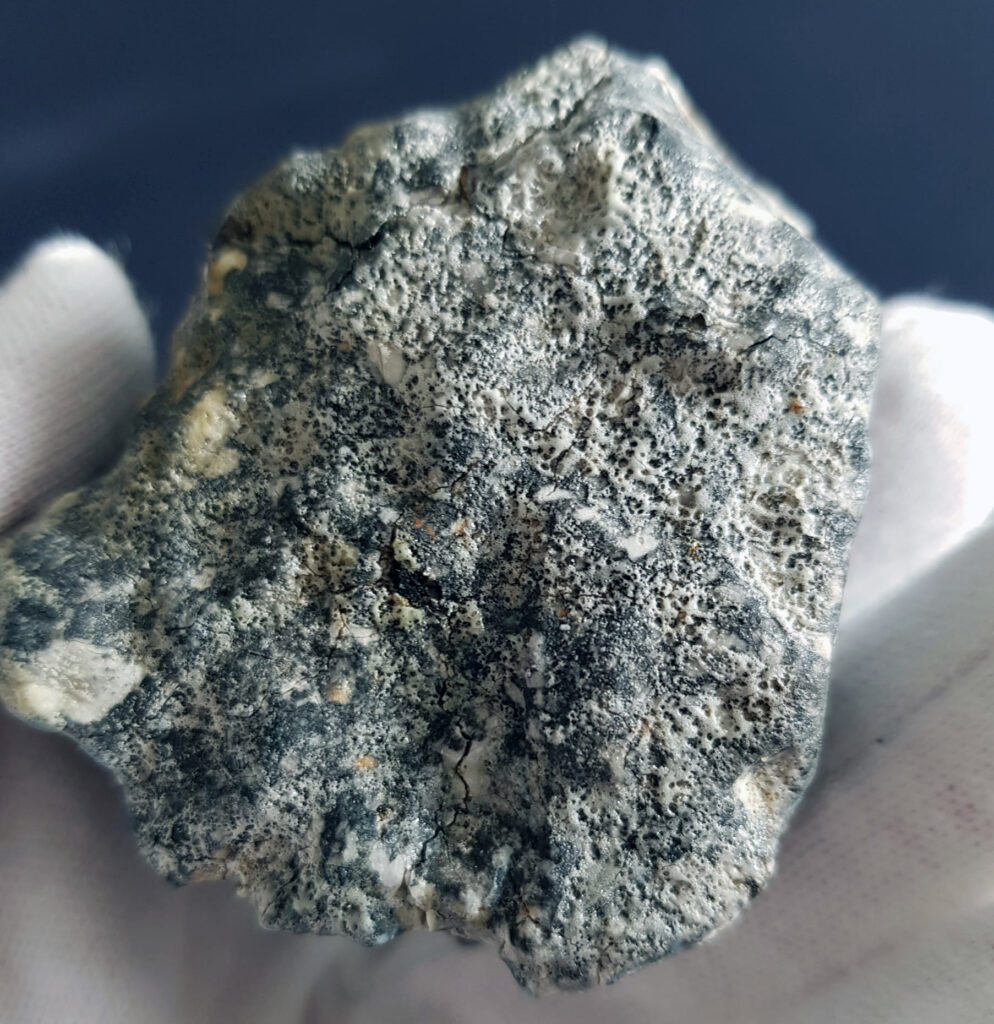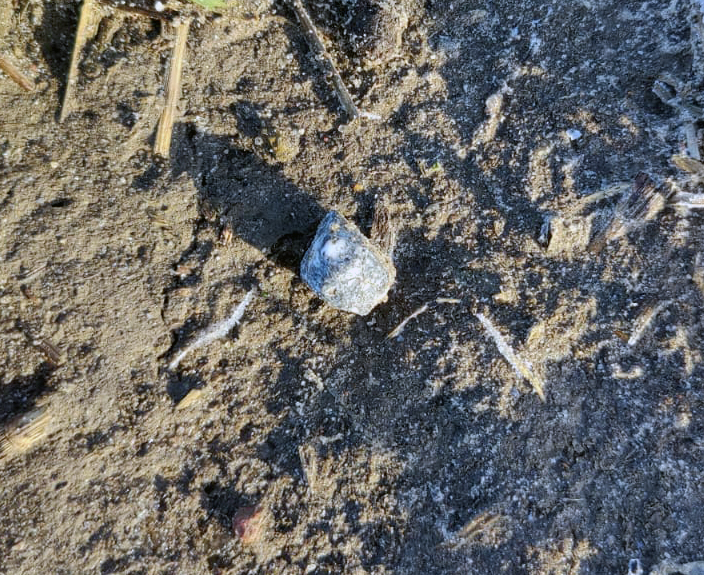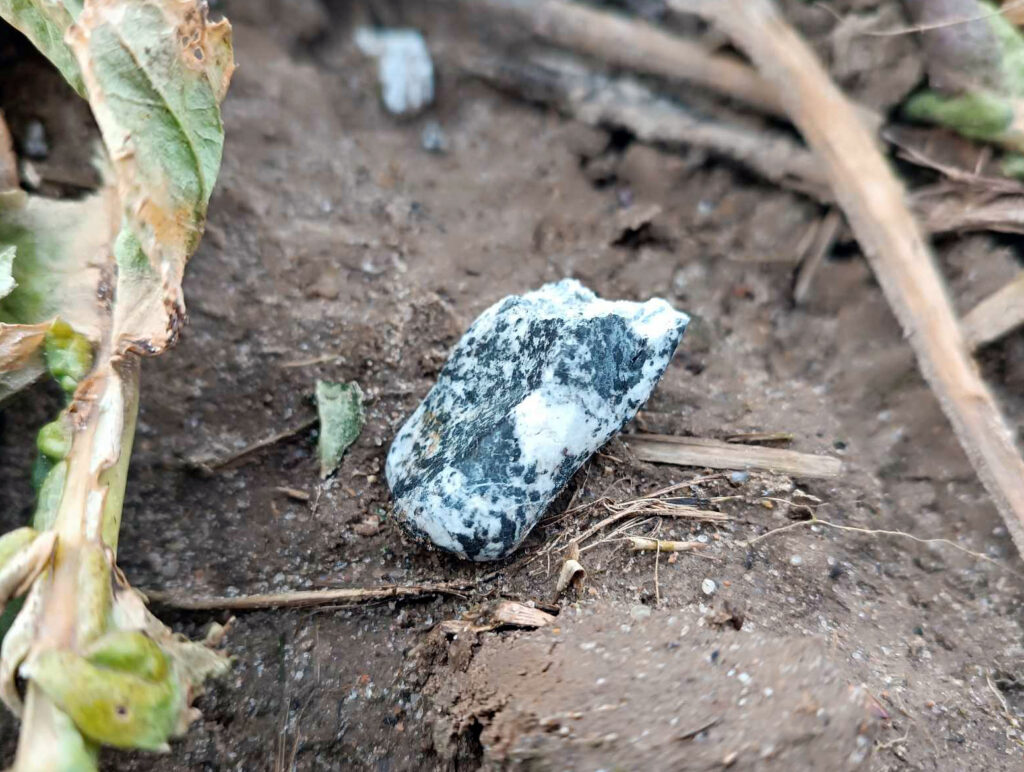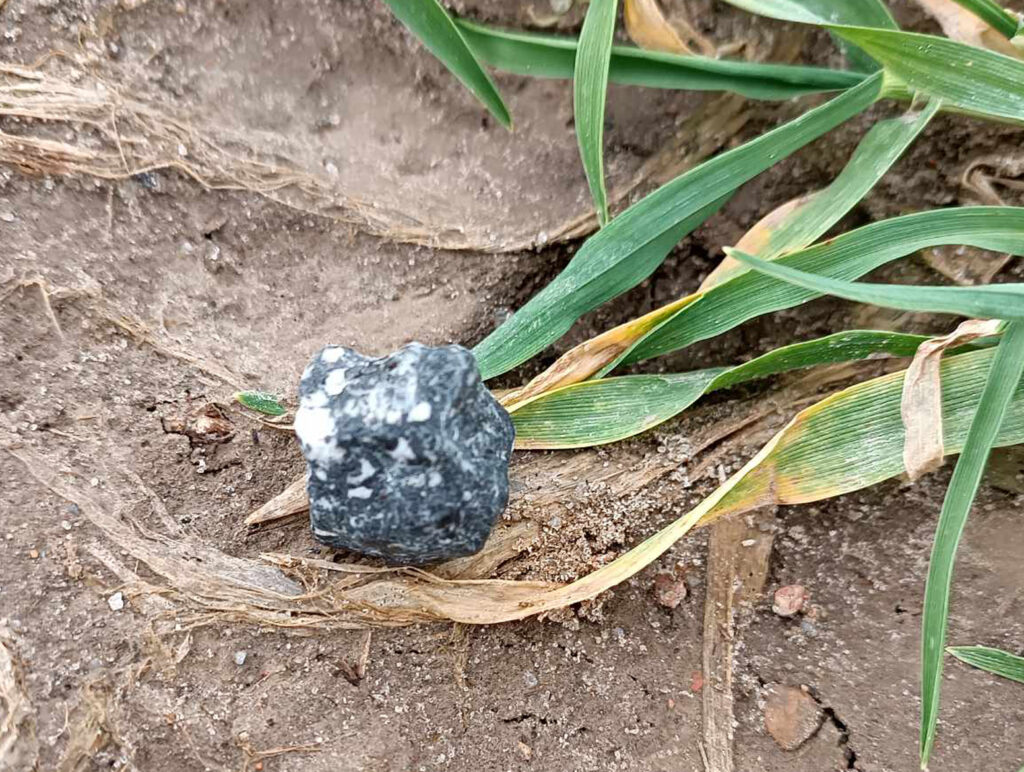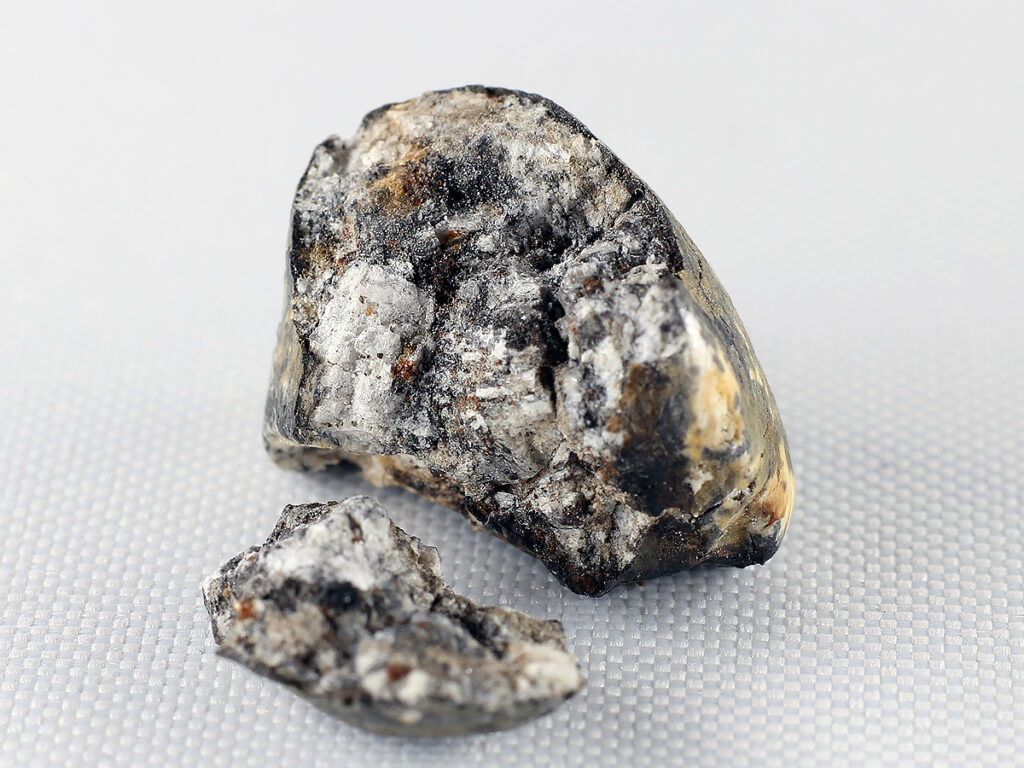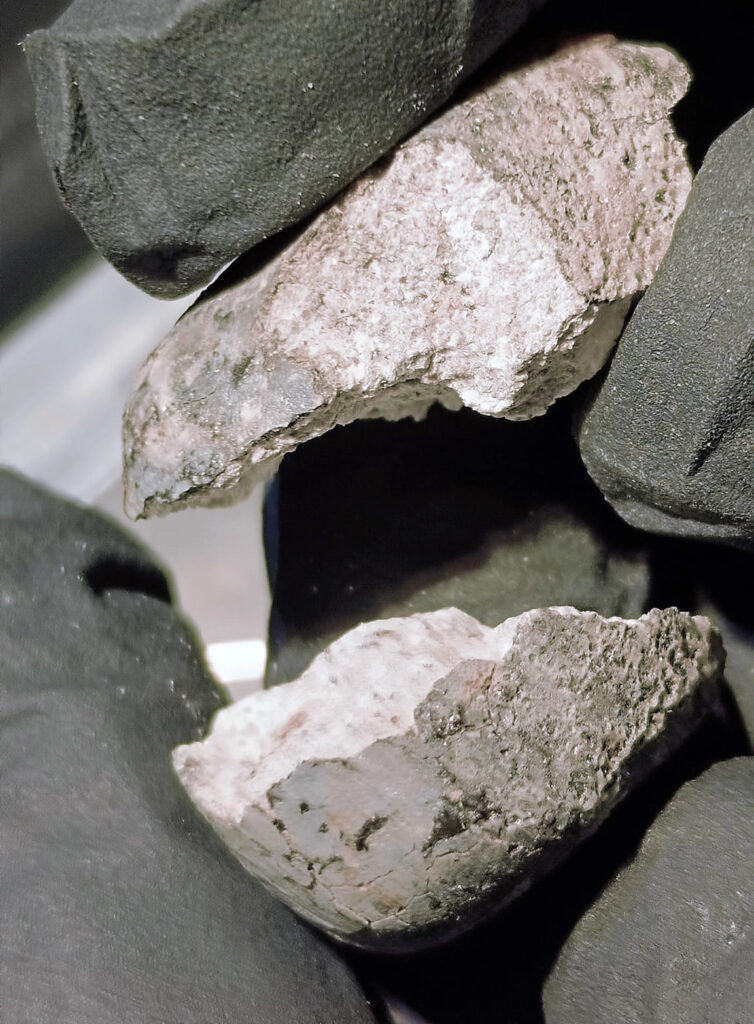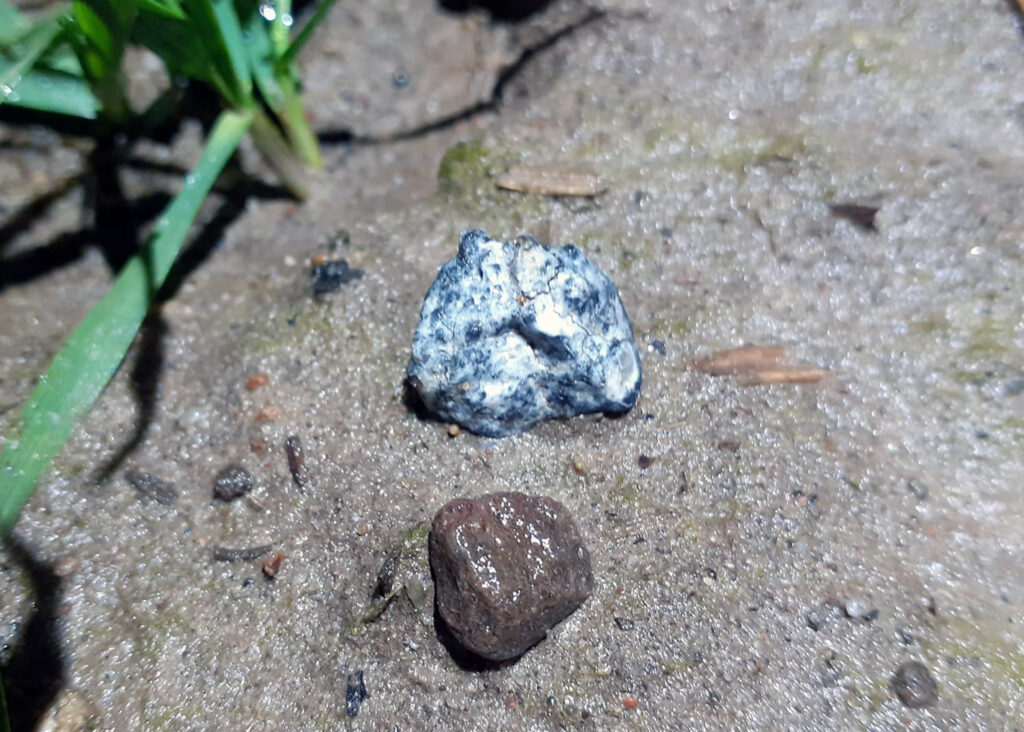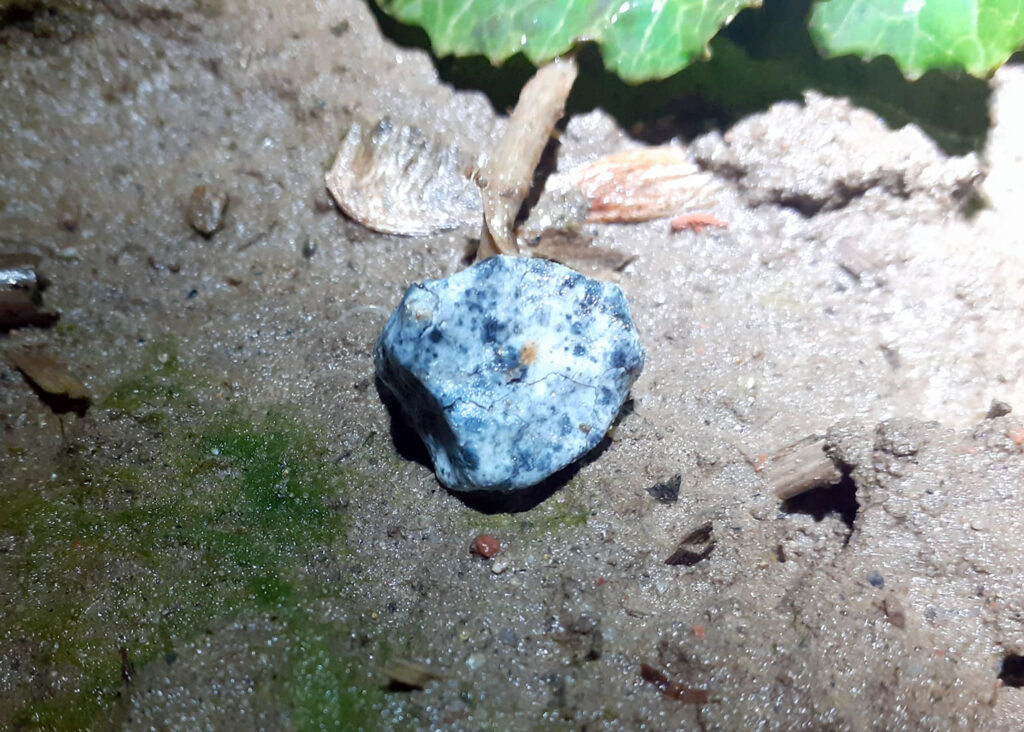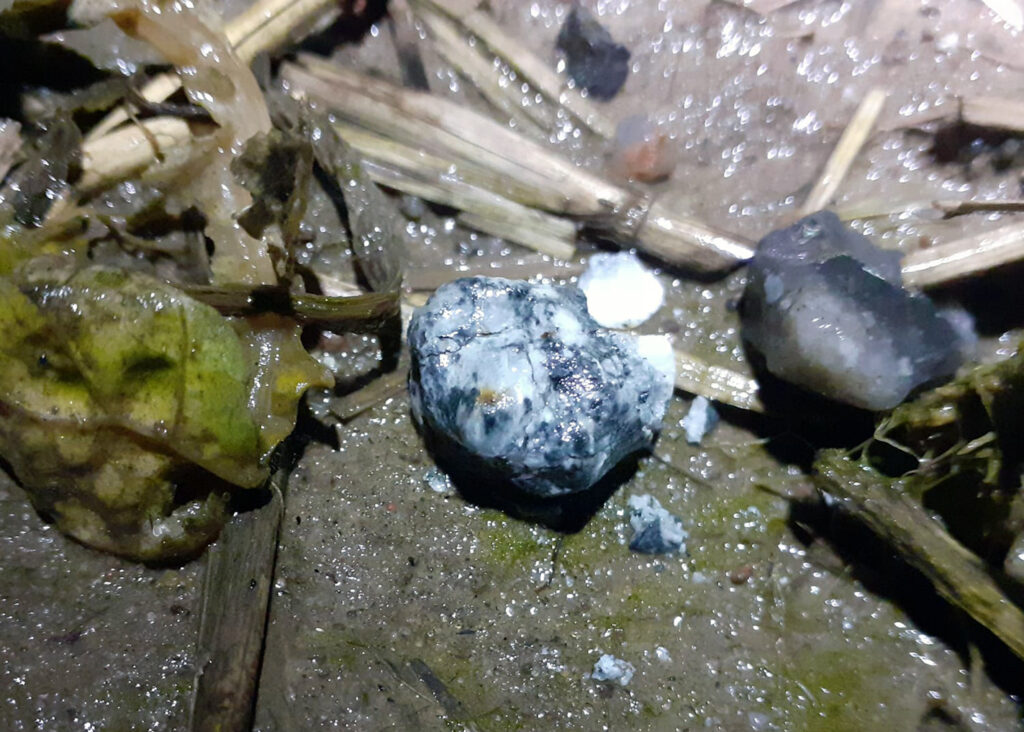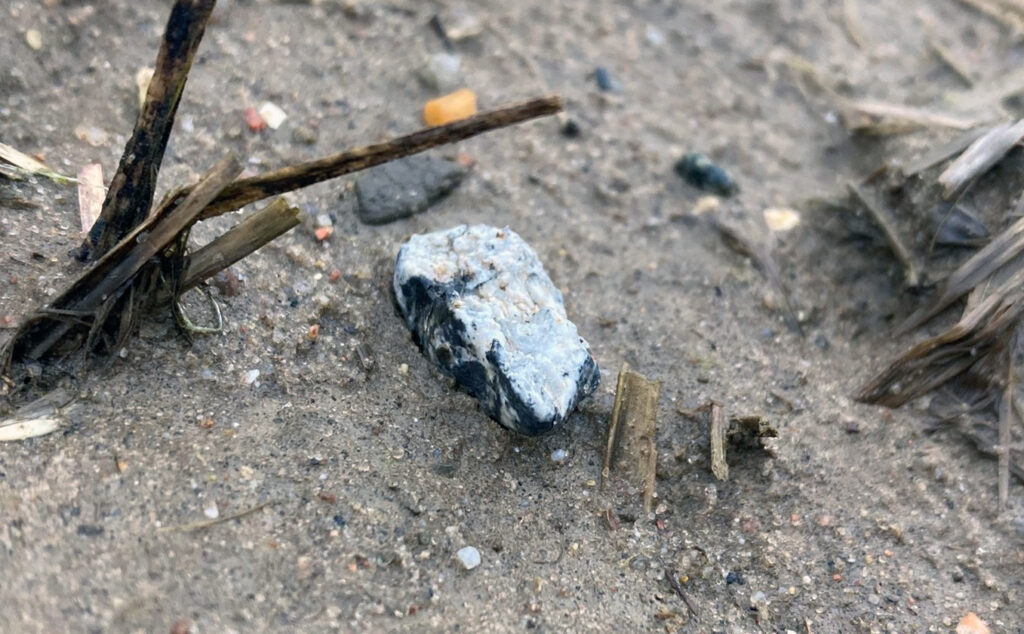RIBBECK (2024 BX1) Aubrite meteorite fall (~ 1760 g) between Selbelang (Paulinenaue), Ribbeck, Berge and Lietzow (Nauen), Havelland, Brandenburg, Germany at 00:32:38-44 UT on 21 January 2024
Last update: 3 January 2025 (13:35 CEST)
On 5 February 2024 it was officially anounced in a press release by the Museum für Naturkunde Berlin that the fall was classified as an Aubrite: press release. The classification results were sent to the NomCom of the Meteoritical Society on 2 February and on 16 February 2024 the witnessed fall was officially registered as RIBBECK in the Meteoritical Bulletin Database of the Meteoritical Society. Seven of the found meteorites are currently being exposed at the Museum für Naturkunde in Berlin for a few weeks.
The find of three fragments (91g (Filip Samuel Nikodem), 57g (Kryspin Kmieciak), 23g (Michał Nebelski)) of one mass (171.66 g (wet) in total) on a field at location 52°37’38.1″N, 12°43’50.6″E at 11:48 CET on 25 January, already in the Paulineaue community, was reported on the same day by a commercial Polish search team consisting of Filip Samuel Nikodem, Michał Nebelski, Kryspin Kmieciak and Andrzej Owczarzak from Poznań in Poland. This find was crucial to help other search teams to know what kind of meteorite they had to look for.
On 26 January (9:30 a.m. CET) Gucsik Bence and Zoltan Balla from Hungary found a 111.193-gram specimen (dried) around the approximate location ~52°37’23.7″N, 12°44’21.6″E in the forest after only 58 minutes of searching. At 14:50 CET on 26 January Ingo Herkstroeter found an intact 52.56-gram specimen at location 52°37’32.5″N, 12°44’42.1″E. On the same day around 1 p.m. first Dominik Dieter (24) and then Cara Weher (18), two geology students at the Freie Universität Berlin, found two small specimens (4.5 gr. and 3.1 gr.) near Berge (Nauen). The two students were members of the meteorite search team of the Museum für Naturkunde Berlin (MfN) and its cooperation partners, including the Freie Universität Berlin and the German Aerospace Center (DLR). The specimens will be added to the meteorite collection of the Museum für Naturkunde Berlin. German meteorite enthusiast David Göttlich found a specimen of 37.5 grams (dried, 39.x g when found wet) as well. On 27 January Andreas Möller, Jürgen and Manuela Rendtel, Ina Rendtel, Peter Lindner and Felix Bettonvil of the search team of Arbeitskreis Meteore e.V. (AKM) found about 10 masses and fragments at three locations near Ribbeck, five after only 7 minutes and 30 seconds of searching and within the first two hours of search. At location 52°37’07.8″N, 12°45’56.9″E several fragments of a 47.01-gram (45.89 g dry) mass, which most likely fragmented on impact, were found. Ina Rendtel found the first 14.76-gram fragment at 09:22 CET, then Peter Lindner found a 20.67-gram (19.64 g dry) fragment nearby, which was analysed from 29 January by Detlev Degering for short-lived radio isotopes with Gamma spectrometry at VKTA’s Niederniveaumesslabor Felsenkeller in Dresden. The third found fragment, weighing 4.3 grams, was found by Ina Rendtel and was analysed by Prof. Addi Bischoff at Münster University, including making thin sections. Another small 1.36-gram fragment was found by Felix Bettonvil and is currently held and analysed at Delft University of Technology in the Netherlands. After Jürgen Rendtel found a 3.56-gram specimen several other very small fragments of the 47.01-gram (45.89 g dry) could be retrieved. At 11:09 CET on the same day the AKM team member Jürgen Rendtel found a 20.51-gram mass at location 52°37’05.8″N, 12°45’53.6″E. Finally, at 14:04 CET team member Andreas Möller found a fragmented 15.59-gram specimen at location 52°36’54.2″N, 12°46’21.4″E. The search team of the Museum für Naturkunde Berlin (MfN) and its cooperation partners (including Nimisha Verma, Julia Maia and Dr. Laëtitia Allibert) found 10 specimens on the same day as well. A 22.04-gram mass was found by Julien Liehmann. On 27 January Tobias Hofmann found a 14.20-gram (dry) specimen at location 52°37’05.3″N, 12°45’33.3″E near Ribbeck. On 27 January Dennis Harries found a mass of 10.2 grams at location 52.61542° N, 12.77355° E. At 13:15 CET on 28 January AKM team members Petra Strunk found a 4.77-gram specimen at location 52°36’35.9″N, 12°47’48.7″E and at 16:16 CET Antal Igaz found a 26.2-gram (25.58 g dry) mass at location 52°37’03.5″N, 12°46’11.8″E. Antal Igaz’s find was also analysed from 29 January by Detlev Degering at VKTA’s Niederniveaumesslabor Felsenkeller in Dresden and is exposed at the Konkoly Observatory in Hungary where Krisztián Sárneczky discovered 2024 BX1. On 28 January the MfN/DLR team found 9 specimens. The team around Filip Samuel Nikodem, Michał Nebelski, Kryspin Kmieciak and Kazimierz Magneto reportedly found four additional specimens weighing 60, 30, 20 and 5 grams. On 28 January Mateusz Żmija, Jarosław Morys, Michał Zimny, and Marzena Rogozińska found two specimens, weighing 9.251 (52°37’15.1″N, 12°45’40.1″E) and 3.384 grams (52°36’41.8″N, 12°46’39.8″E), near Ribbeck and between Ribbeck and Berge. At 9:34 a.m. on 28 January Agata Roicka found a 21.16-gram specimen and in the afternoon Zsofia Biro (of the Bence search group) found a 5.2-gram specimen at location 52°36’55.4″N, 12°46’29.5″E. On 29 January Sven Lauber found a ~3.8-gramm specimen. Late on the same day (29-30 Jan.) Kryspin Kmieciak announced the find of a wet 225-gram mass (212 g dry) in the forest around the approximate location ~52°37’26.7″N, 12°44’23.8″E. On 30 January Michael Hurtig found a 14.13-gramm mass (3.1×2.5 cm). On the same day Emődi Csaba, Nagy Olivér, Kereszty Zsolt of the Hungarian Meteoritical Society reported the finding of two masses (10.62 grams (dried, 11.04 when found wet at 9:50 a.m.) (52°36’34.308” N, 12°47’21.681” E) and ~21 grams (wet in situ) (52°36’30.380” N, 12°47’21.257” E) south of Berge. Then on 3 February the Hungarian team found its third meteorite. On 30 January (10.05 a.m.) Mirko Graul found a thumb-seized 14.84-gram mass. On 2 February Paweł Zaręba found two specimens in four fragments and some crumbs weighing 17.2 grams. The first specimen found around 10:43 a.m. weighs 9.2 grams and was found at location 52°36’28.1″N, 12°47’46.0″E. The second one weighs 8 grams and was found around 13:36 p.m. at location 52°36’23.0″N, 12°48’23.4″E. At 10:44 CET on 3 February Ingo Herkstroeter found an intact 11.11-gram specimen at location 52°36’48.6″N, 12°47’00.6″E. Also on 3 February Thomas Becker found a 12-gram specimen (28 x 23 x 17 mm) and in the afternoon Daniel Steiniger found a 5.45-gram specimen at location 52°36’19.3″N, 12°48’28.2″E . On the same day at around 10:08 a.m. Paweł Zaręba found a third mass (5.7 g, two fragments) at location 52°36’24.8″N, 12°48’16.9″E. Some commercial search teams have found other smaller masses. At 13:50 CET on 3 February Andreas Möller (AKM) found an oriented 2.86-gram specimen at location 52°36’46.2″N, 12°48’27.1″E and in the afternoon Sang-Hyeok Lee found a 11.7-gram mass (dried, wet in-situ weight was 12.4g) at location 52°36’42.0″N, 12°47’04.0″E. On the same day Tom Hughes found a 4.14-gram (dry) mass (4.4g when in situ) at location 52°36.628′ N, 12°48.513′ E. At 9:03 CET on 3 February Maksymilian Jakubczak found a 4.93-gram fragment which matches a 5.27-gram fragment (incl. 0.04 g of smaller crumbs; 5.67 g when wet in-situ) found by Szymon Kozłowski at 16:42 CET on the same day (3 February) at location 52°36’14.4″N, 12°48’42.8″E, 756 meters away. Kozłowski’s fragment is on display at the Astronomical Observatory of the University of Warsaw. At 11:22 a.m. on 3 February Mieszko Kołodziej found a 22.039-gram specimen. At 10:51 CET on 4 February AKM team member André Knöfel found a 3.73-gram specimen at location 52°36’43.6″N, 12°48’14.3″E. All together the AKM team members have found about 126.29 grams of meteorites at eight different locations. On 4 February Julien Liehmann found an oriented 7-gram mass and Michael Hurtig found a 2.80-gram (2.80g and 0.02g) specimen and a 12.40-gram mass. On 11 February he found another four partly fragmented specimens weighing between 1.5 and 4.5 grams. Commercial search teams from Poland found several specimens (~3g, ~5g, ~5g, and ~5g on 2 February, 3.3g on 3 February). On 4 February Leon Thann found a 5.193-gram specimen and in the early afternoon Olek Błasiak found an 8.11-gram mass, reportedly at location 52°36’54.0″N, 12°47’33.0″E. At 11:17 CET on 10 February Ingo Herkstroeter found a slightly oriented 2.03-gram specimen at location 52°36’30.168″N, 12°49’08.327″E. Also on 10 February Ralf Simmat and Charlotte Bedke found a 24.37-gram mass (25.74 gram in situ) near Ribbeck and Leon Thann reportedly found a 4.640-gram mass. On the same day Mirko Graul found a 1.96-gram (1.937 g dry) specimen and on 15 February he found a 2.69-gram (dry) fragment. On 11-12 February Enrico Hoff and his son found four specimens including a 5.41-gram and a 2.77-gram mass. Richard ‘Di’ reports having found a 47.5-gram specimen on 11 February at location 52°36’32.7″N, 12°47’42.8″E. Zsolt Kereszty reports having found a 3.6-gram specimen on a field south of Lietzow on 14 February. On 14 February Tomasz Aurora reports the find of a 3.19-gram specimen near the wind park south of Berge. At 15:30 CET on 15 February 2024 Thomas Naumann found 7.79-gram specimen (wet, ~2 x ~2 cm) at location 52°36’29.2″N, 12°48’17.1″E. On the same day Marcin Rościszewski reportedly found a 6.716-gram mass and Jarosław Morys reportedly found a 1.894-gram and an oriented 3.384-gram specimen with flowlines. On 16 February Jarosław Morys’s team reportedly found a 9.263-gram mass and on 17 February a 2.532-gram specimen. At 14:58 CET on 21 February Abdelkabir Oulgour found a 2.4-gram specimen at location 52°36’23.0″N, 12°49’19.9″E and at 16:12 CET on 22 February he found an oriented 2.38-gram specimen at location 52°36’27.3″N, 12°49’24.4″E. On 25 February Marzena Rogozińska reportedly found a 2.86-gram specimen near location 52°36’27.1″N, 12°48’10.6″E. On 27 February Mirko Graul found his fourth meteorite, weighing 1.07 grams. At 16:18 CET on 5 March Ingo Herkstroeter found a 3.01-gram fragment (2.56 g, 0.22 g and 0.23 g in crumbs) at location 52°36’15.552″N, 12°49’47.1″E and at 15:36 CET on 6 March he found another 4.48-gram fragment (4.36 g and 0.12 g of crumbs) at location 52°36’32.256″N, 12°47’3.66″E. At 16:46 CET on 9 March Andreas Möller (AKM) found a fully-crusted 7.36-gram (dried) specimen at location 52°36’32.3″N, 12°48’31.2″E and Hartmut Osterburg found a 1.56-gram fragment at location 52°36’32.7″N, 12°47’42.8″E. On 11 March Frank Rauschenbach found a 1.49-gram specimen at location 52°36’22.9″N, 12°49’22.9″E. At about 12:14 CET on 20 March Stefan Ralew found a beautifully oriented 0.872-gram specimen at location 52°36’32.0″N, 12°49’02.1″E. At 14:47 CET on 27 March Thomas Bieber found a 3.335-gram mass (dry) which shattered into in five fragments on impact. The biggest fragment (2.1 x 1.5 cm) weighs 2.741 grams and the second largest fragment 0.360 grams. All fragments were found within a radius of about 20 centimetres at location <52°36.324N, 12°50.311E. Many private German, Polish and Hungarian meteorite enthusiasts found their very first meteorite during this winter’s Ribbeck search activity. Several finders, especially the ones of larger masses, report that the found specimens emit a sulphurous smell, possibly because of the terrestrial weathering of Oldhamite within the meteorites. The official classification of the meteorite started on 29 January and the classification results were sent to the NomCom of the Meteoritical Society on 2 February 2024.
On 25 September 2024 the Franco-German culture TV channel ARTE broadcast the 30-minute documentary film Re: Auf der Jagd nach Meteoriten / ARTE Regards: Chasseurs de météorites about private search activities and scientific studies around the Ribbeck meteorite fall.
On 17 March 2024 the Arbeitskreis Meteore e.V. published its first map of the Ribbeck strewn field online. A revised version of the map contains 203 find locations revealed by 11 July 2024. The map below (203 finds by 11 July) was created by Andreas Möller (Arbeitskreis Meteore e.V.)
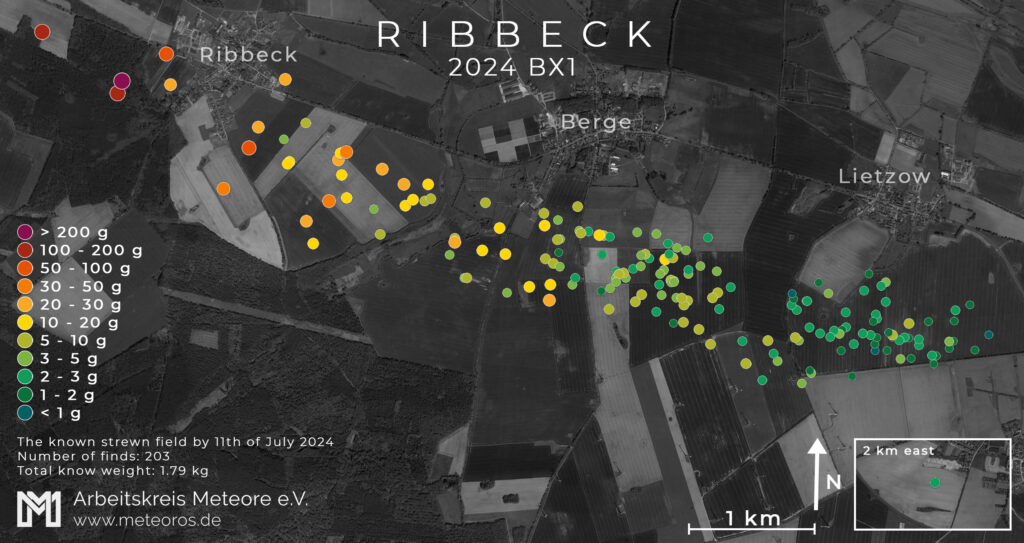
Our Ribbeck strewn field map (Version 10, updated 2 April 2024, 10:10 CET)

Currently known strewn field, based on kindly provided data from different finders. We thank all the finders very much for sharing their information! The colour strips show the calculated potential fall locations of different masses and their assumed weight (effective 8 February 2024), including some uncertainties, which were created during the observed fragmentation of the meteoroid (between 5.50 and 6.30 seconds after 00:32:38 UT), as recorded with Sirko Molau’s camera AMS16 in Ketzür (Beetzseeheide) and by Michael Aye from Lichtenrade, Tempelhof-Schöneberg, Berlin. There were apparently larger uncertainties concerning the calculated fall locations of masses because of measurement issues with Michael Aye’s handheld smartphone video. The uncertainties are actually substantially larger than indicated in the coloured stripes in the image above (effective 8 February 2024). These calculations of possible fall locations of masses were provided and published as first update on 8 February 2024 (22.00 CET) and second update (an updated calculated fall zone for the presumed and yet unfound mass M (~400 g, broad red strip) and F (80–90 g, broad violet strip ) on 14 February (17:30 CET) by the excellent team of Pavel Spurný, Jiří Borovička and Lukáš Shrbený of the Department of Interplanetary Matter at the Czech Institute of Astronomy of the CAS and can be found here: Zánik malé planetky 2024 BX1 západně od Berlína 21. ledna 2024 zachycený kamerami Evropské bolidové sítě Image: karmaka
We kindly invite any finders of Ribbeck meteorites to send us ( ribbeckmeteorite(et)planet.ms ) their information about fall locations and weights of found masses, which will then be added to the map above and forwarded to the Museum of Natural History, Berlin so that the finds and locations can be officially documented and added to future scientific publications about this extraordinary meteorite fall. Thank you!
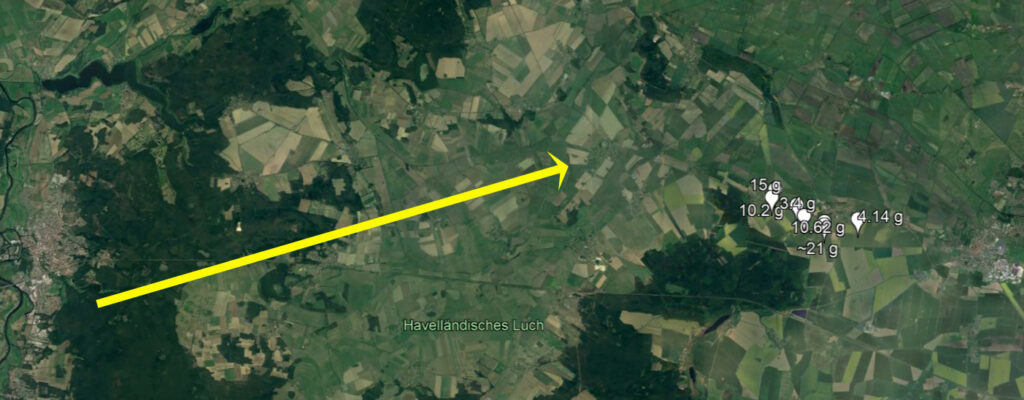
The bolide’s trajectory projected to the ground (as provided by Pavel Spurný, Jiří Borovička a Lukáš Shrbený, see above, in cooperation with AllSky7Germany: (Sirko Molau, André Knöfel and Mike Hankey (AMS)) and the fall locations of some meteorite masses (as of 8 February), kindly provided by several finders of meteorites. Image: karmaka
P. Spurny, J. Borovicka, L. Shrbeny, M. Hankey, R. Neubert
A&A article proposed for acceptance
“Asteroid 2024 BX1 was the eighth asteroid discovered shortly before colliding with the Earth.The associated bolide was recorded by dedicated instruments of the European Fireball Network and the AllSky7 network on January 21, 2024 at 0:32:38-44 UT. Here we report a comprehensive analysis of this instrumentally observed meteorite fall, which occurred as predicted west of Berlin, Germany. The atmospheric trajectory was quite steep with an average slope to the Earth’s surface 75.6 degrees. The entry speed was 15.20 km/s. The heliocentric orbit calculated from the bolide data agrees very well with the asteroid data. However, the bolide was fainter than expected for a reportedly meter-sized asteroid. The absolute magnitude reached -14.4 and the entry mass was estimated to 140 kg. The recorded bolide spectrum was low in iron from what an enstatite-rich meteorite was expected. Indeed, the recovered meteorites, called Ribbeck, were classified as aubrites. The high albedo of enstatite (E-type) asteroids can explain the size discrepancy. The asteroid was likely smaller than 0.5 meter and should be rather called a meteoroid. During the atmospheric entry, the meteoroid severely fragmented into much smaller pieces already at a height of 55 km under the aerodynamic pressure of 0.12 MPa. The primary fragments were then breaking-up again, most frequently at heights 39-29 km (0.9-2.2 MPa). Numerous small meteorites and up to four stones larger than 100g were expected to land. Within a few days of publishing the strewn field dozens of meteorites were found in the area we predicted.”
First reported find (171.66 grams)
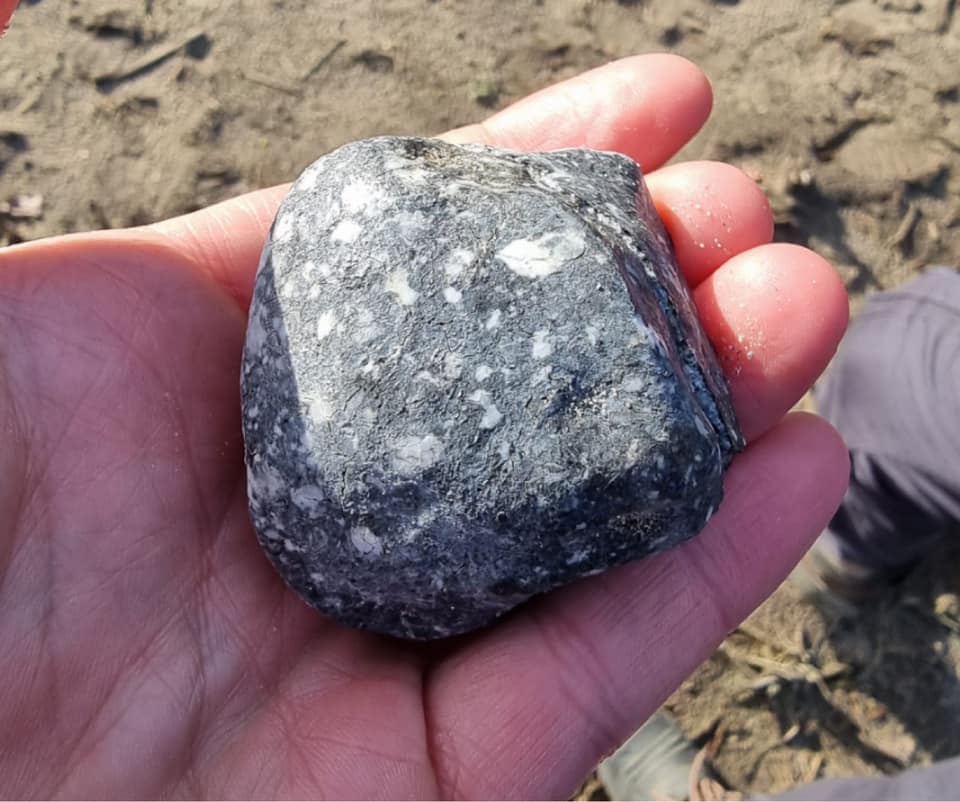
Two broken fragments (91g and 57g) combined. Photo published by Zsolt Kereszty on 25 January 2024
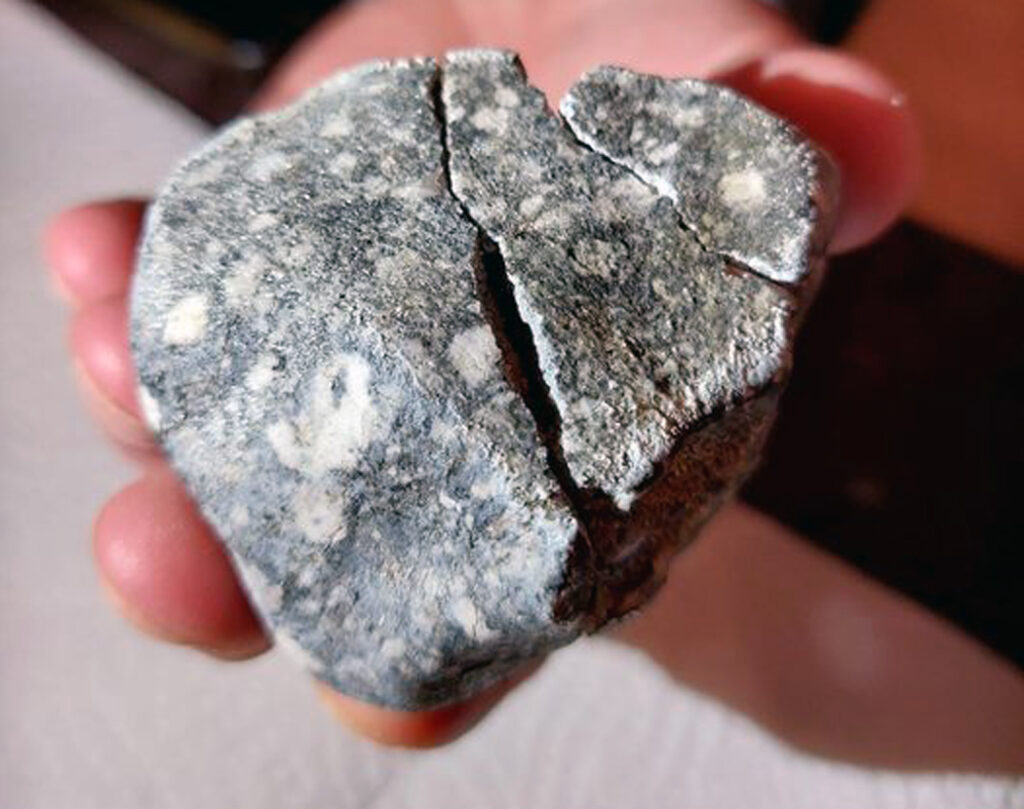
Three fragments (91g, 57g and 23g) of a 171.66-gram mass combined, with translucent fusion crust and flow lines. Photo published by Zsolt Kereszty on 25 January 2024
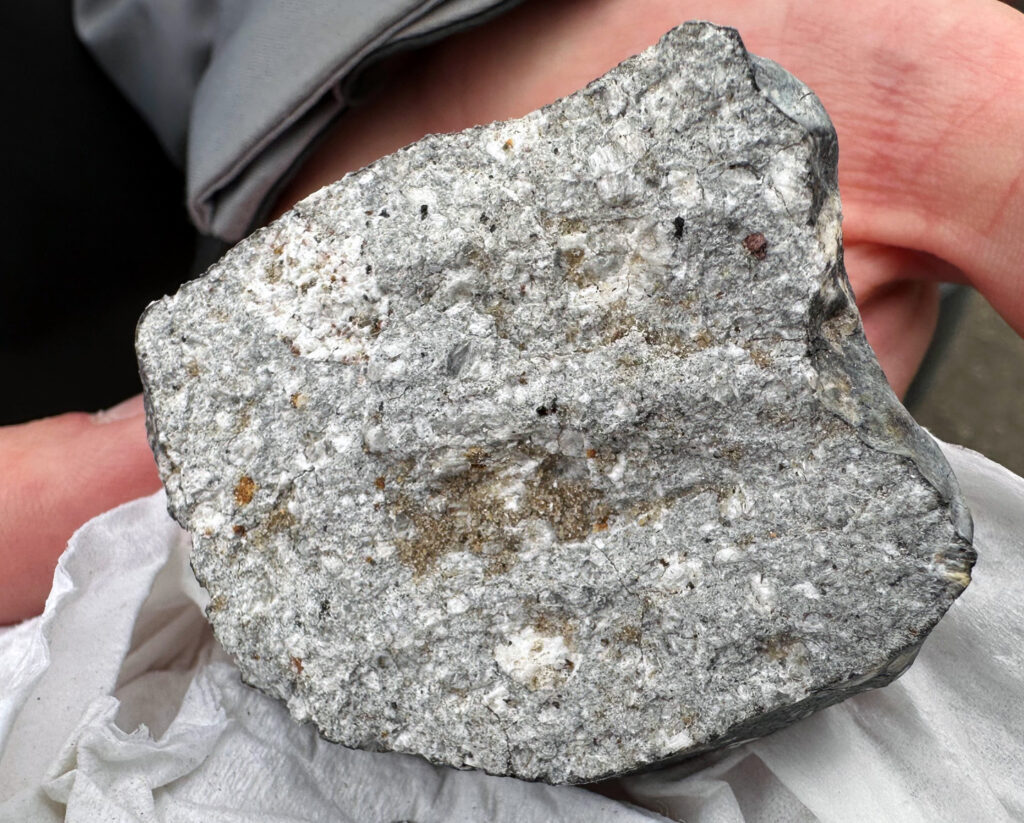
The broken face of the 91-gram fragment of the 171.66-gram mass. Photo: Filip Samuel Nikodem
Two fragments (91g, 57g). Photo published by Filip Samuel Nikodem on 25 January 2024
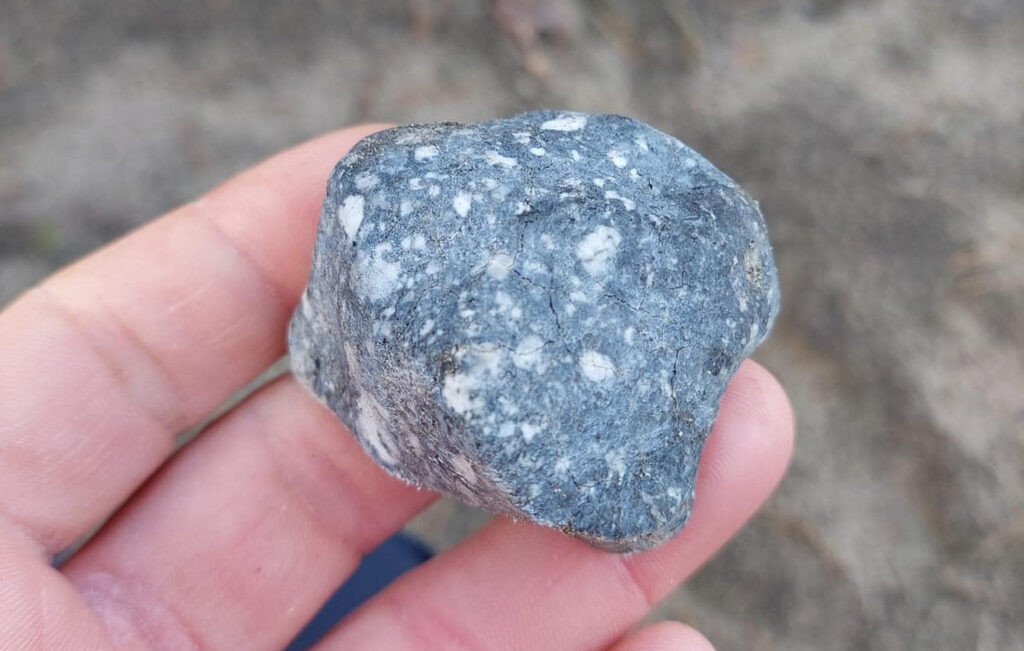
One of the first found fragments (91g). Photo published by Zsolt Kereszty on 25 January 2024

One of the first found fragments. Photo published by Zsolt Kereszty on 25 January 2024
Second reported find (111.1927 grams (dried), intact specimen)
111.193-gram mass in situ. Photo: Gucsik Bence
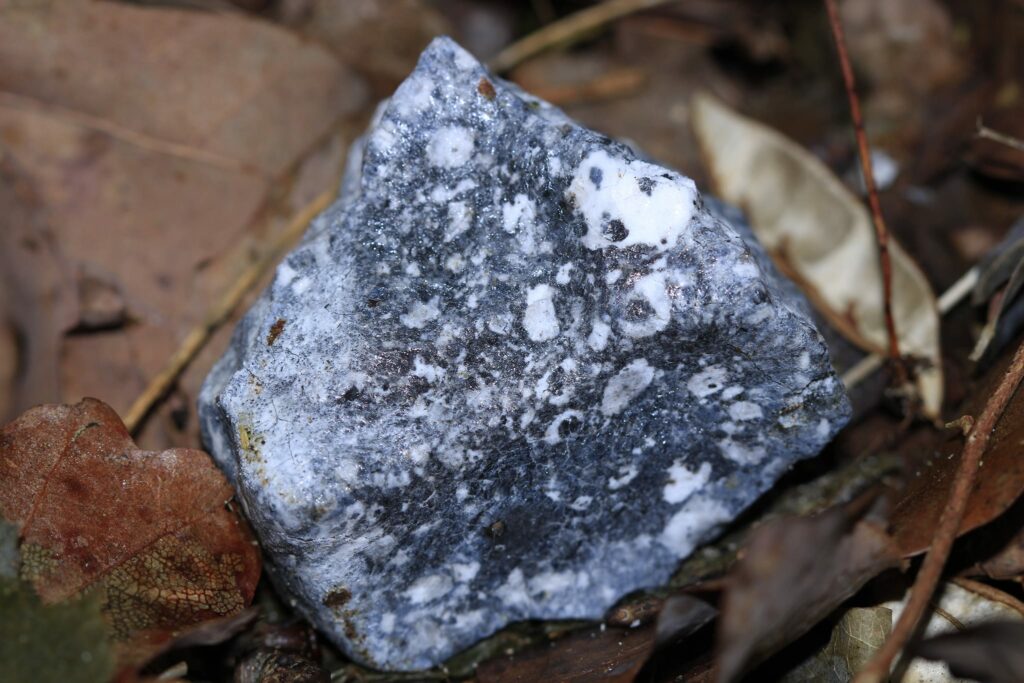
Almost fully fusion-crusted 111.193-gram mass in situ. Photo: Gucsik Bence
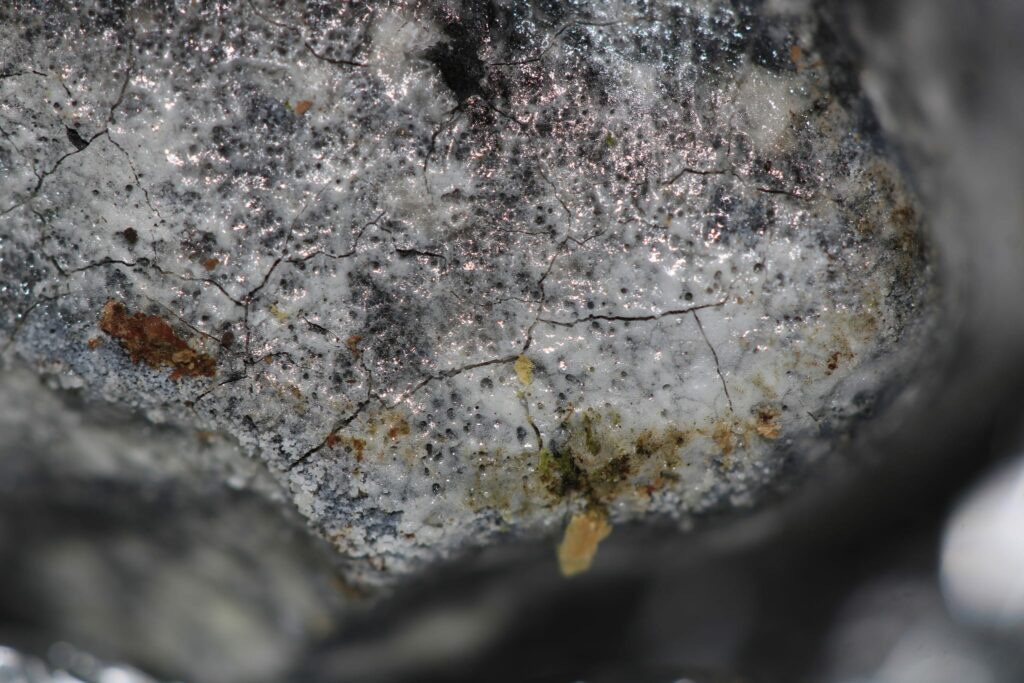
Beautiful glossy fusion crust with contraction cracks of the 111.193-gram mass in situ. Photo: Gucsik Bence

111.193-gram mass in situ in foliage auf the forest near Ribbeck on 26 January 2024. Photo: Gucsik Bence
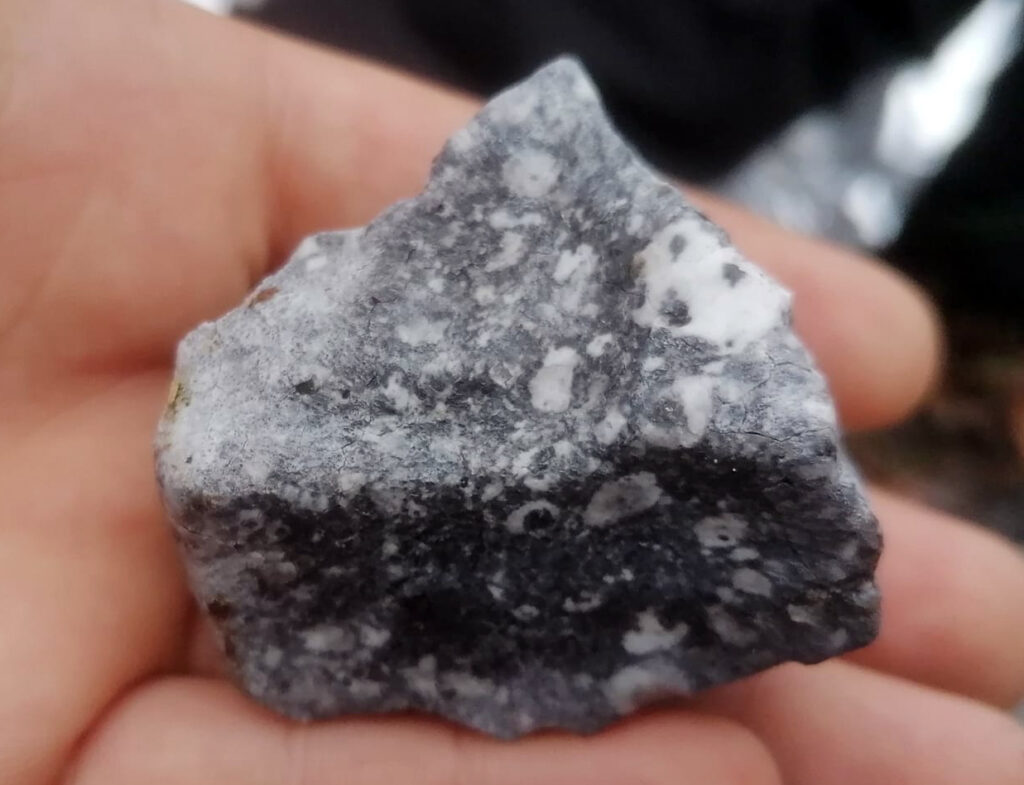
Photo: Gucsik Bence
Third reported find (37.79 grams, intact specimen)

Specimen in situ (37.79 grams, about 4.7 cm in length) Photo: David Göttlich
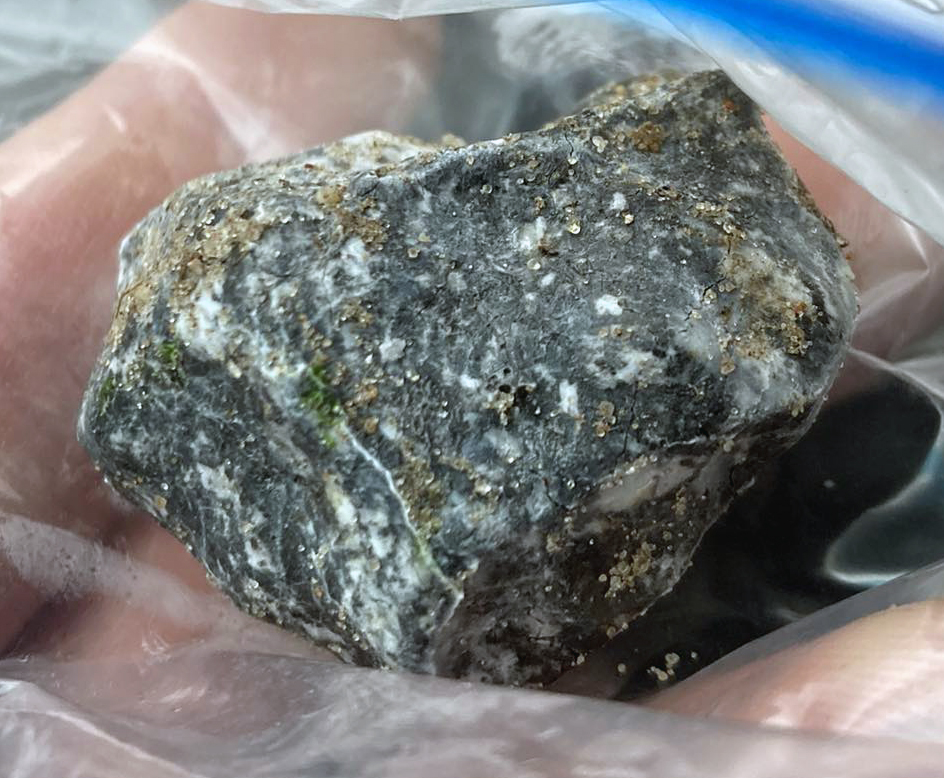
Photo: David Göttlich

Photo: David Göttlich
Fourth and fifth reported finds (4.5 and 3.1 grams)

The 4.5-gram specimen of the MFN Berlin finds in situ. Photo: MFN Berlin/ Cevin Dettlaf
The 4.5-gram specimen of the MFN Berlin finds. Photo: Andreas Kraatz
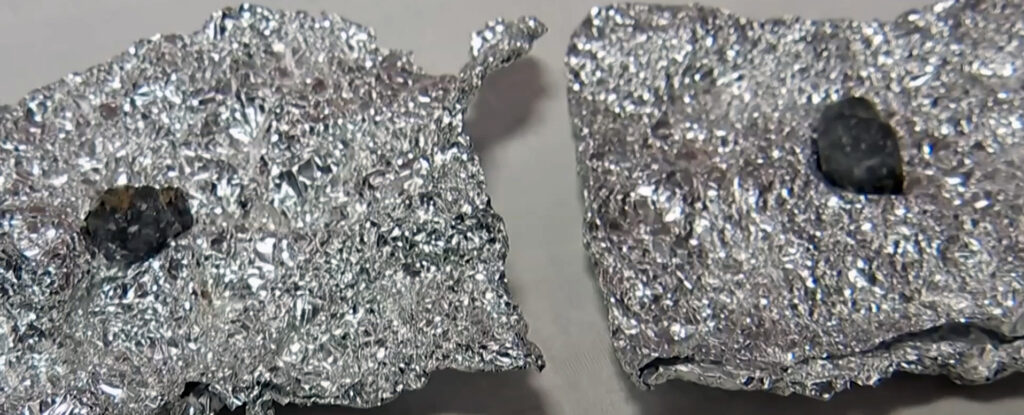
The 3.1- and the 4.5-gram meteorites found by the MFN Berlin search team on 26 January 2024. Image: RBB
Regional news report presenting the some of the found specimens and fragments. (RBB24, Brandenburg Aktuell, 26 January 2024)
Regional news report presenting the some of the found specimens and fragments. (RBB24, Abendschau, 26 January 2024)
AKM (Arbeitskreis Meteore e.V.) finds (126.29 grams)
On 2 April 2024 the Arbeitskreis Meteore e.V. published reports about their work and contribution to the Ribbeck fall in its journal METEOROS 03/2024 (PDF)

AKM search team members joined by Prof A. Bischoff are presenting their finds on 27 January 2024. Photo: Andreas Möller (Arbeitskreis Meteore e.V.)
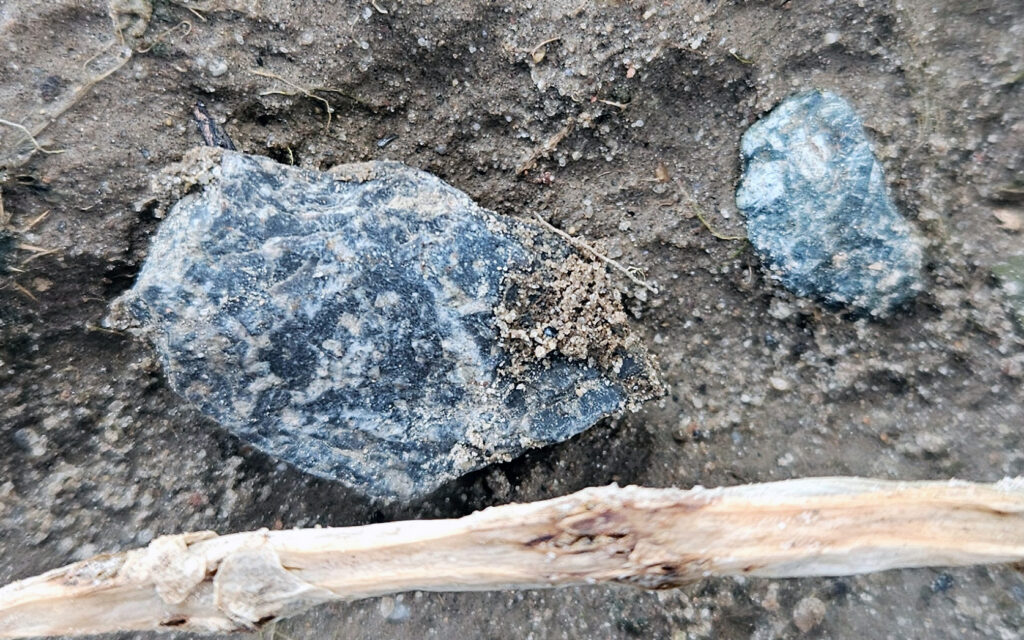
One of the AKM finds in situ on 27 January. Photo: Andreas Möller (Arbeitskreis Meteore e.V.)

One of the AKM finds in situ. A find by Jürgen and Manuela Rendtel on 27 January. Photo: Andreas Möller (Arbeitskreis Meteore e.V.)

Close-up of Jürgen and Manuela Rendtel’s AKM find on 27 January 2024. Photo: Andreas Möller (Arbeitskreis Meteore e.V.)
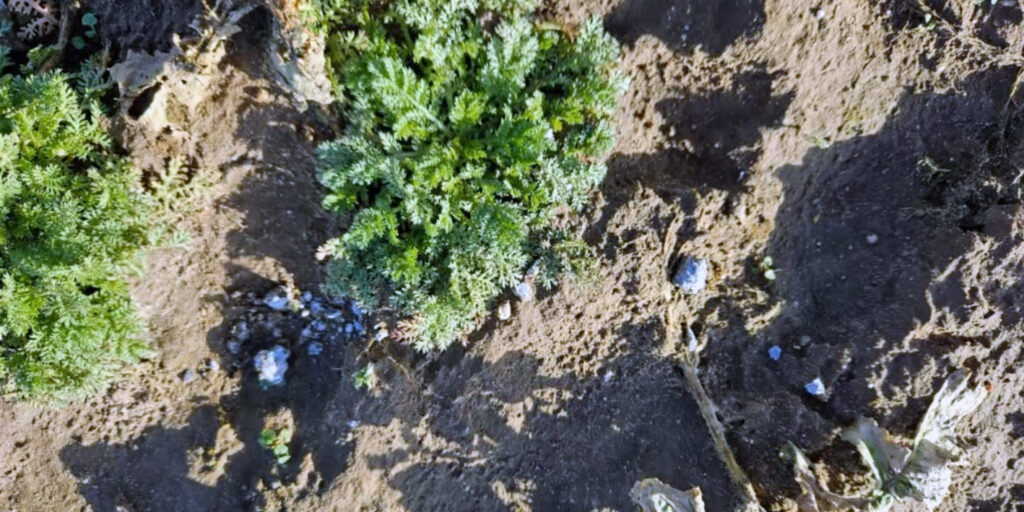
Fragmented mass in situ, found on 27 January by Andreas Möller. Photo: Andreas Möller (Arbeitskreis Meteore e.V.)
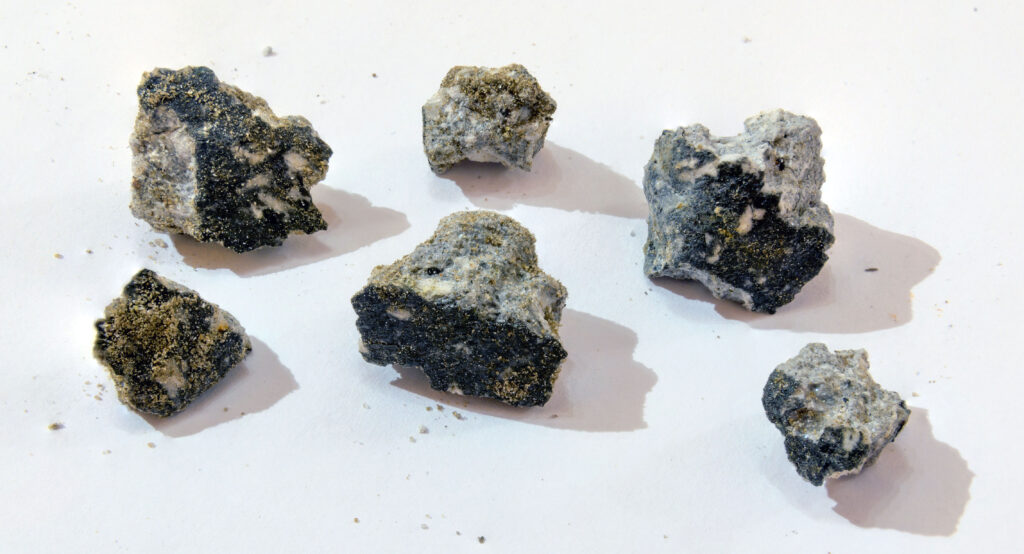
Fragments of a shattered meteorite. Photo: Andreas Möller (Arbeitskreis Meteore e.V.)
Meeting of AKM search team members with D. Göttlich in the field. Video: Märkische Allgemeine/AKM
Additional masses
255-gram mass

A completely fusion-crusted 225-gram mass, published by Kryspin Kmieciak on 29 January 2024

A completely fusion-crusted 225-gram mass, published by Kryspin Kmieciak on 29 January 2024
Bubbly fusion crust and contraction cracks on the 225-gram mass. Photo published by Kryspin Kmieciak on 30 January 2024
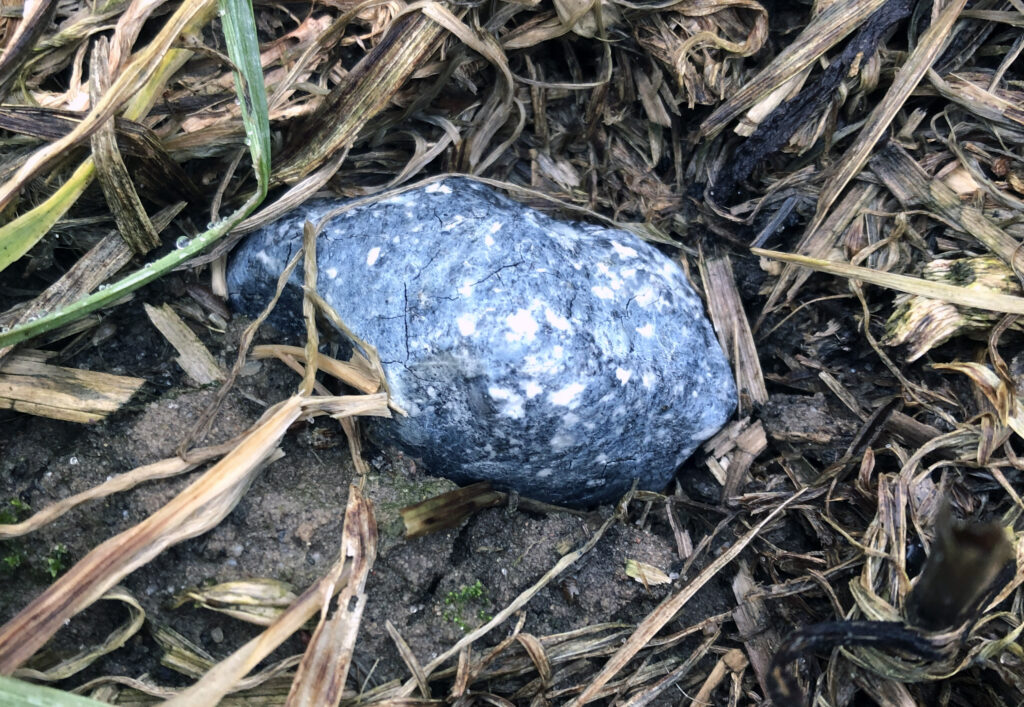
Ingo Herkstroeter’s 52.56-gram specimen in-situ at 14:50 CET on 26 January 2024. Photo: Ingo Herkstroeter

A 10.62-gram specimen (
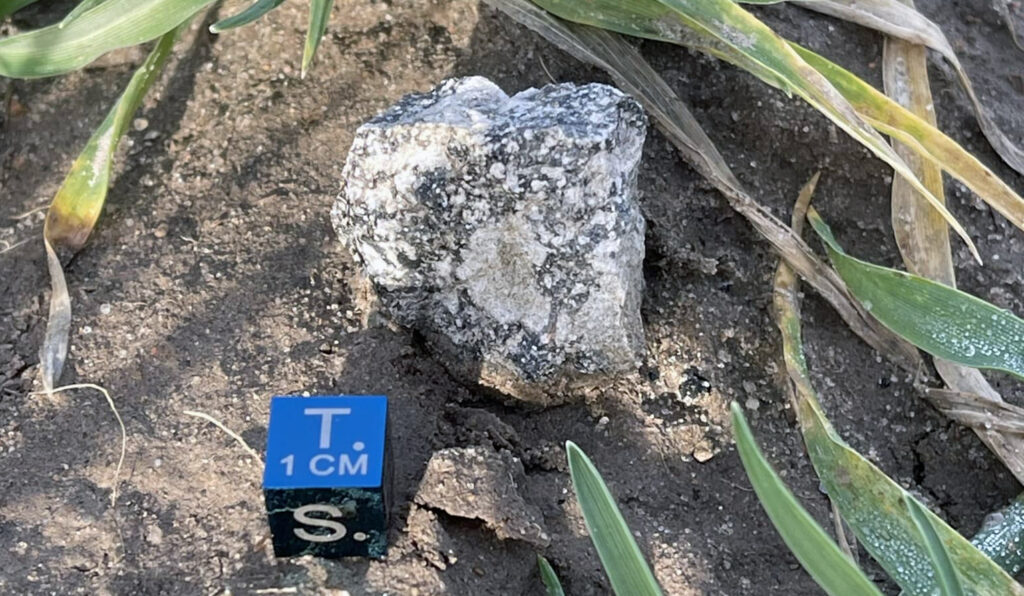
A 20/21-gram specimen, found by the search team of the Hungarian Meteoritical Society on 30 January 2024. Photo: Zsolt Kereszty

On 27 January Dennis Harries found a mass of 10.2 grams at location 52.61542° N, 12.77355° E. Photo: Dennis Harries

A 22.04-gram specimen found on 27 January 2024 by Julien Liehmann. Photo: Julien Liehmann

A thumb-seized 14.84-gram specimen found by Mirko Graul on 30 January 2024. Photo: Mirko Graul

One of the DLR-MfN-FU finds on 27 January in situ. Photo: Julia Maia
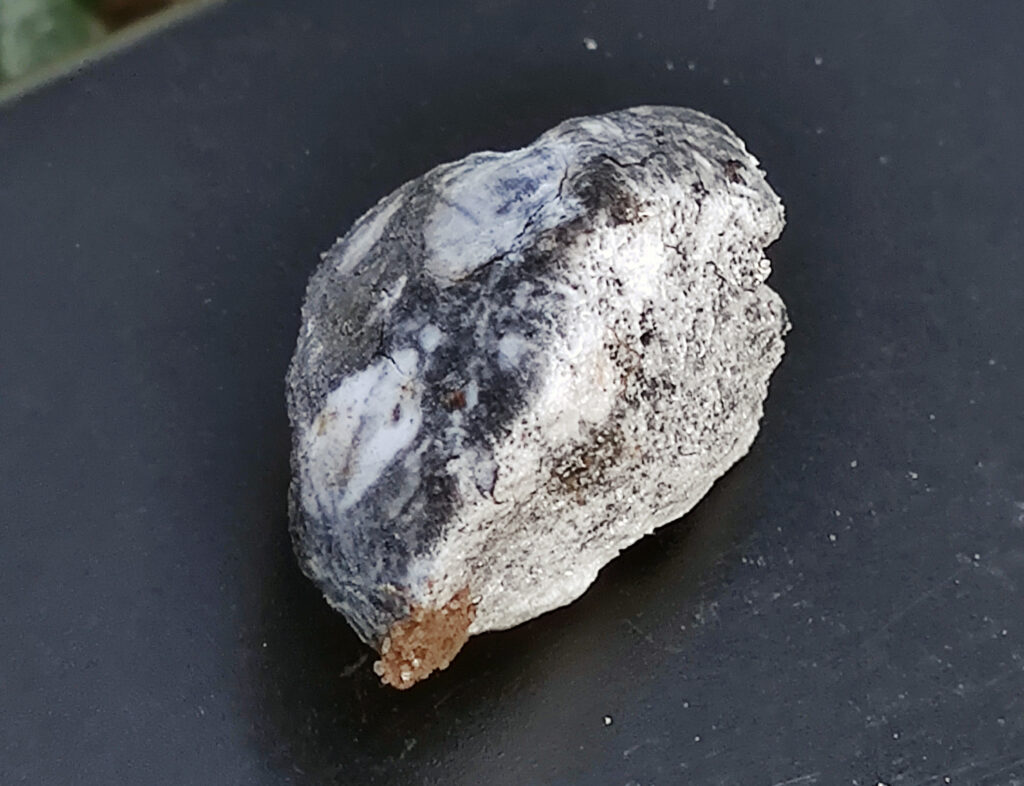
A 4.2-gram meteorite which was found by Dr. Laëtitia Allibert of the DLR-MfN-FU team on 27 January 2024.
A small specimen (3.4 g, 9mm) in situ, found by Dr. Szilárd Csizmadia as member of the DLR-MfN team at 10:15 a.m. on 28 January 2024. Photo: Szilard Csizmadia
A small specimen found by Nimisha Verma, member of the DLR-MfN-FU search team, on 27 January 2024
A 14.2-gram specimen (diameter of ~3cm) found near Ribbeck. Photos: Tobias Hofmann
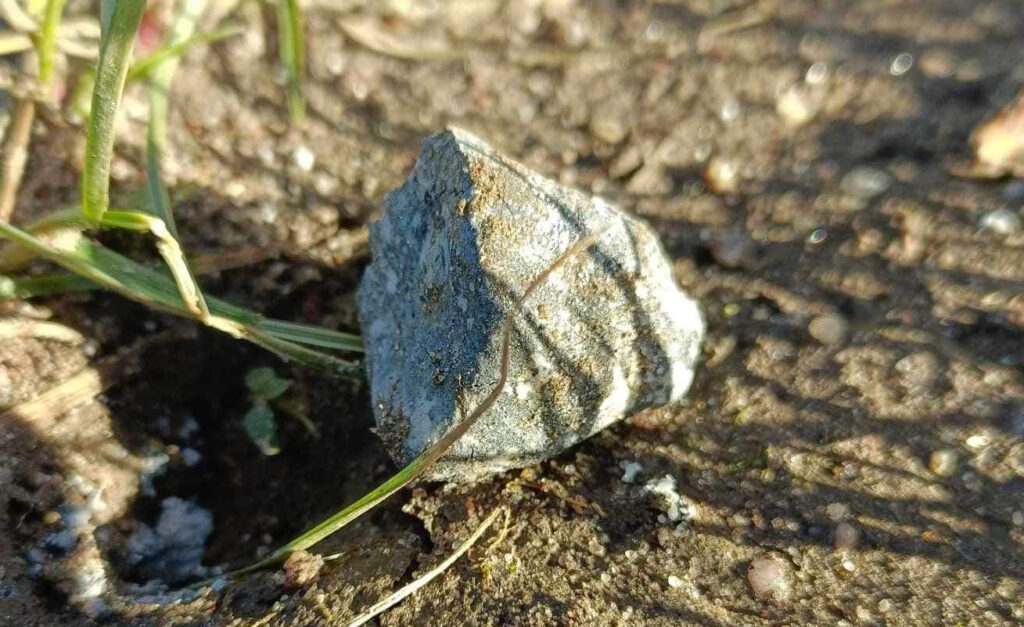
The 9.251-gram specimen found by Mateusz Żmija , Jarosław Morys, Michał Zimny, and Marzena Rogozińska on 28 January 2024. Photo: Jarosław Morys / Michał Zimny

A specimen (~60 grams) found by Filip Nikodem and his team, most likely in the afternoon of 28 January. Photo: Filip Nikodem

Specimen of 53.9 grams found by Filip Samuel Nikodem on 27 January 2024. Photo: Filip Samuel Nikodem
Paweł Zaręba’s first (on the left, 9.2 grams, partly fragmented into three pieces on impact) and second find (8 g) on 2 February 2024. Total weight of all the fragments of the two masses: 17.2 g. Photos: Paweł Zaręba
Paweł Zaręba’s finds 9.2 grams (left), 8 grams (centre) and 5.7 grams (left). Photos: Paweł Zaręba
The third find of the Hungarian search team in the morning of 3 February 2024. Photo published by Zsolt Kereszty on 3 February 2024
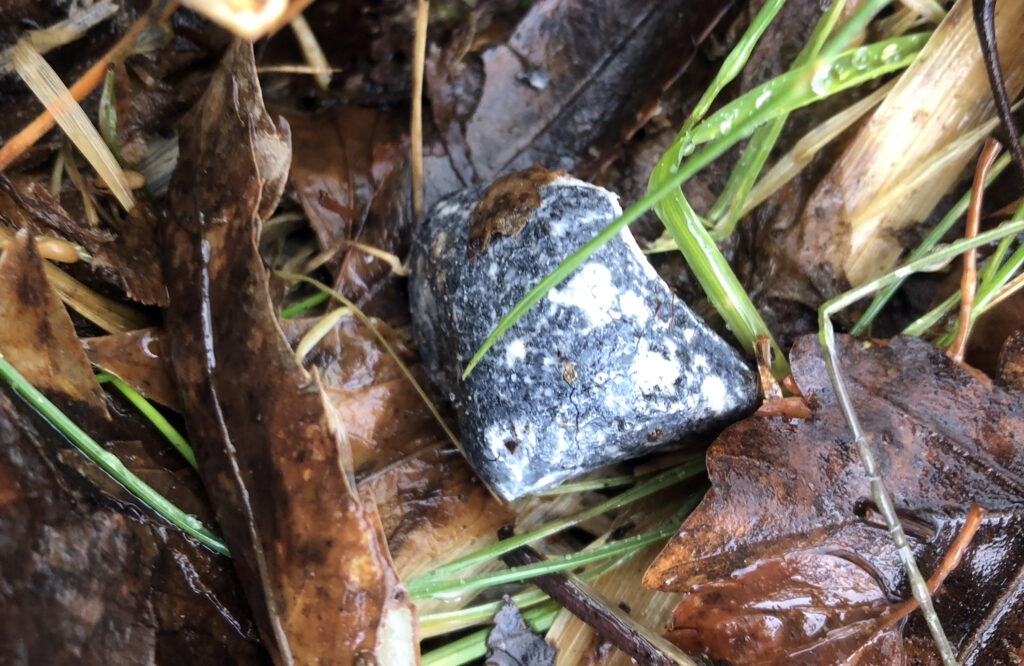
Ingo Herkstroeter’s 11.11-gram specimen in-situ at 10:44 CET on 3 February 2024. Photo: Ingo Herkstroeter
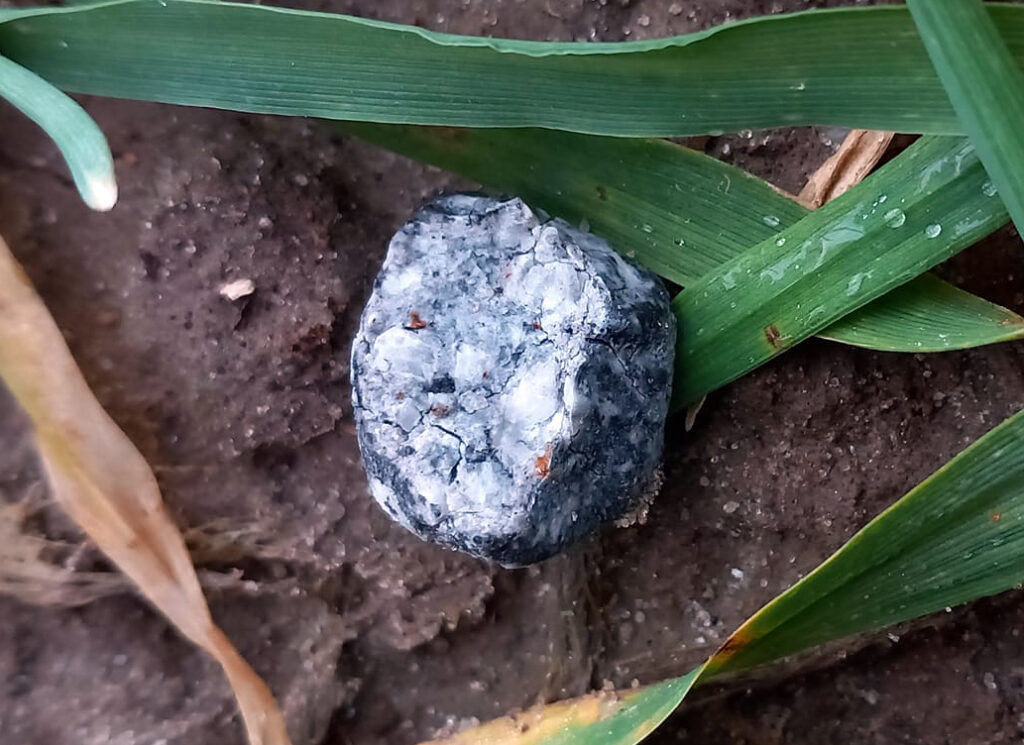
A 4.4-gram mass, found by Tom Hughes on 3 February 2024. Photo: Tom Hughes

A 2.86-gram mass, found by Andreas Möller on 3 February 2024. Photo: Andreas Möller

An oriented 7-gram mass, found by Julien Liehmann on 4 February 2024. Photo: Julien Liehmann
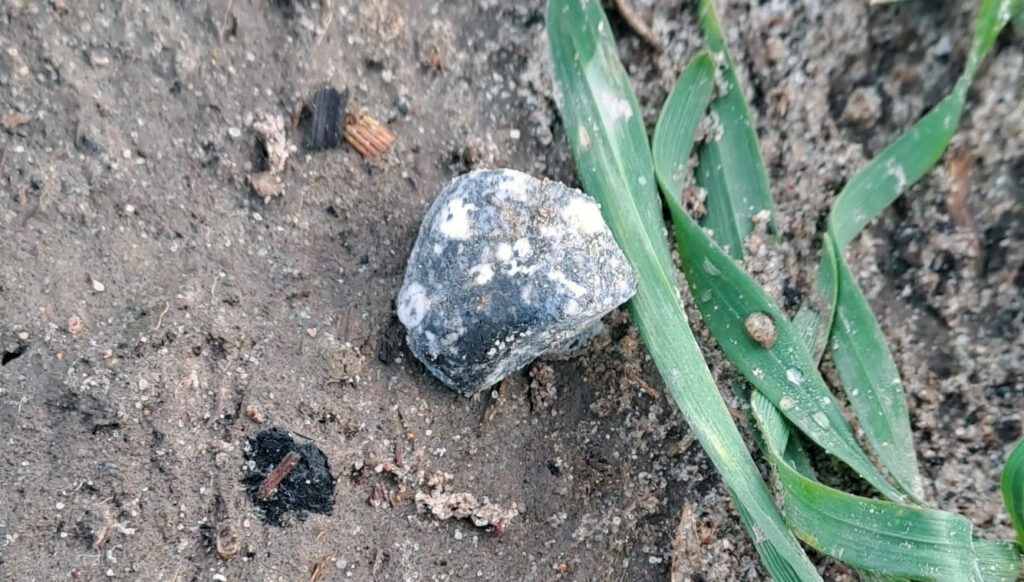
André Knöfel’s 3.73-gram specimen in situ on 4 February 2024. Photo: André Knöfel
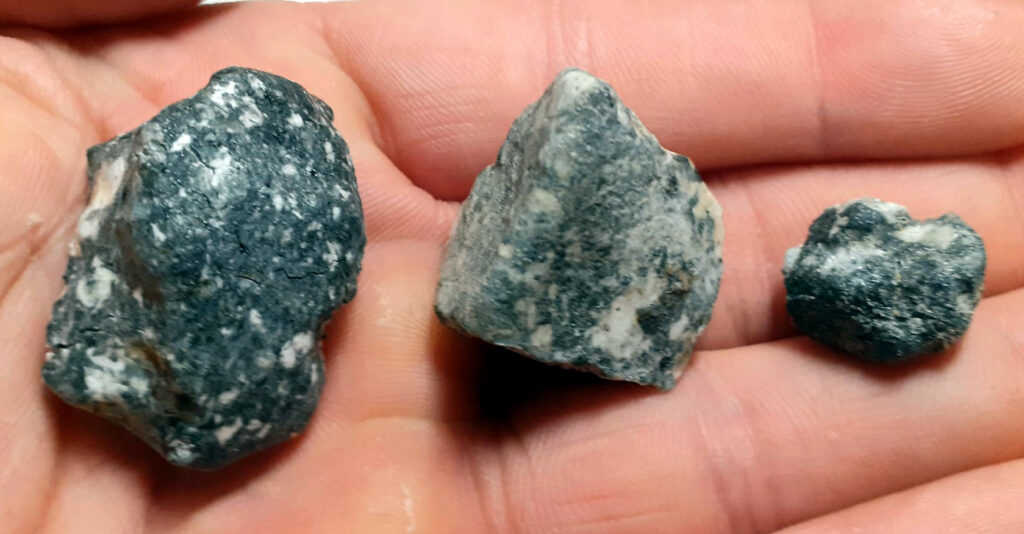
The three masses found by Michael Hurtig (14.13g on 30 January, 12.40g and 2.94g (2.80 and 0.02g) on 4 February 2024). Photo: Michael Hurtig.

Michael Hurtig’s 12.94-gram mass in situ on 4 February 2024. Photo: Michael Hurtig
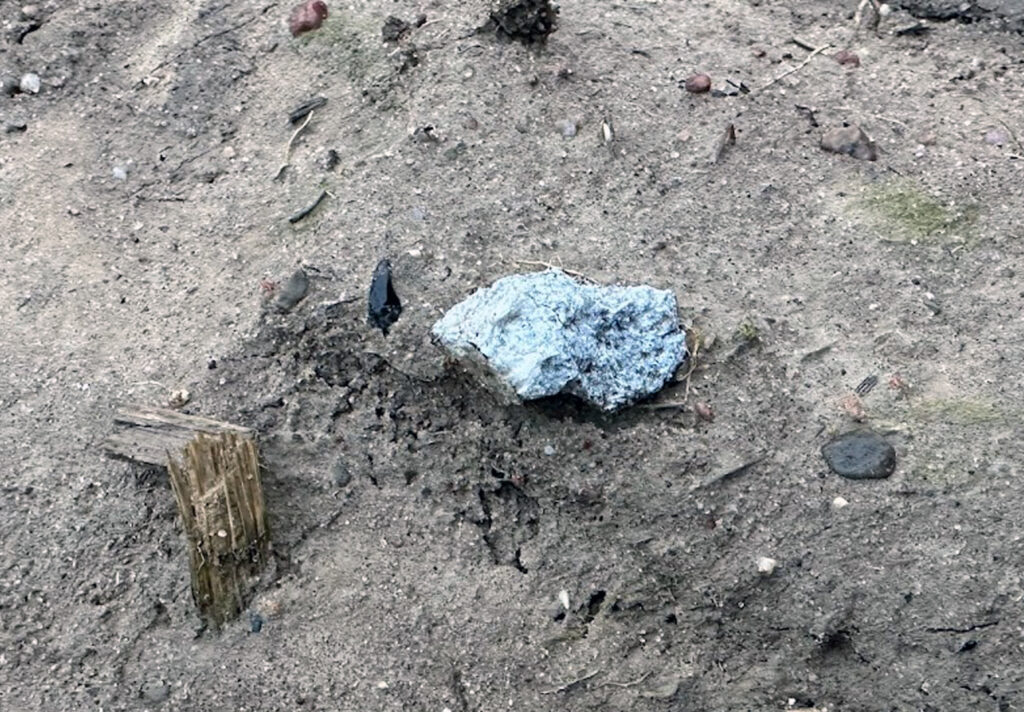
Szymon Kozłowski’s 5.27-gram fragment in situ at around 16:44 CET on 3 February 2024. Photo: Szymon Kozłowski
Matching fragments of Maksymilian Jakubczak (4.93g, below) and Szymon Kozłowski (5.27g, above), both found on 3 February, 756 meters apart from each other. Photos published by Marcin Ha on 4 February.

Agata Roicka’s 21.16-gram find on 28 January 2024. Photo: Mieszko Kołodziej
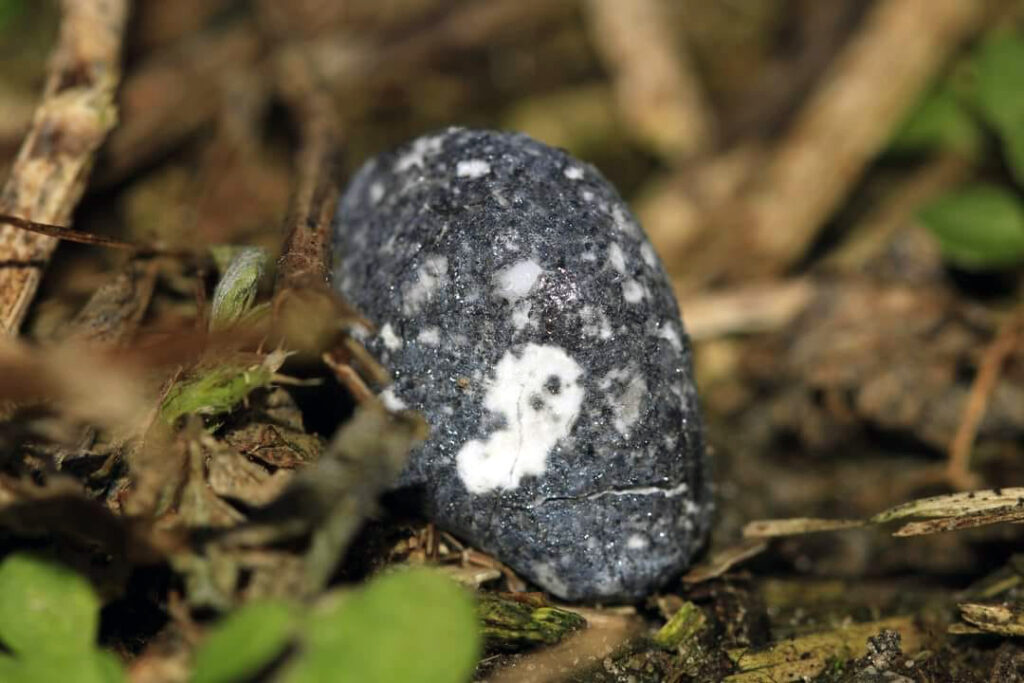
Zsofia Biro’s 5.2-gram find on 28 January 2024. Photo: Gucsik Bence
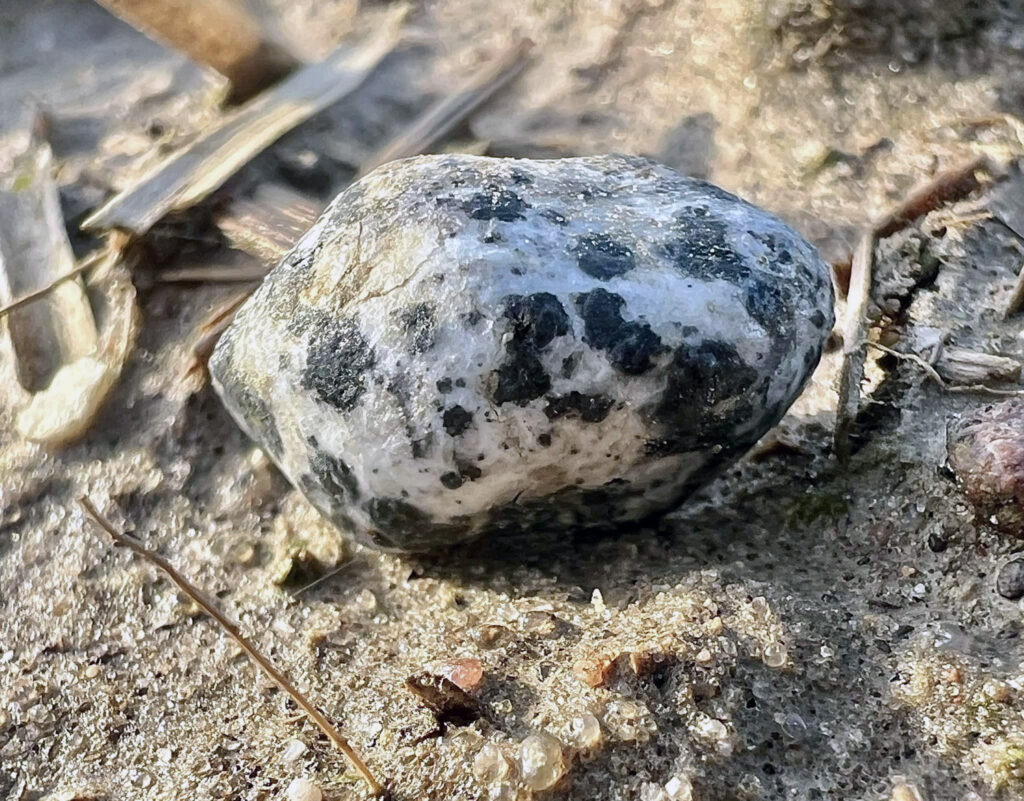
Mirko Graul’s 1.96-gram (1.937 g dry) find in-situ on 10 February 2024. Photo: Mirko Graul

Ingo Herkstroeter’s 2.03-gram specimen in-situ at 11:17 CET on 10 February 2024. Photo: Ingo Herkstroeter

Thomas Becker’s 12-gram find (28 x 23 x 17 mm) in situ on 3 February 2024. Photo: Thomas Becker
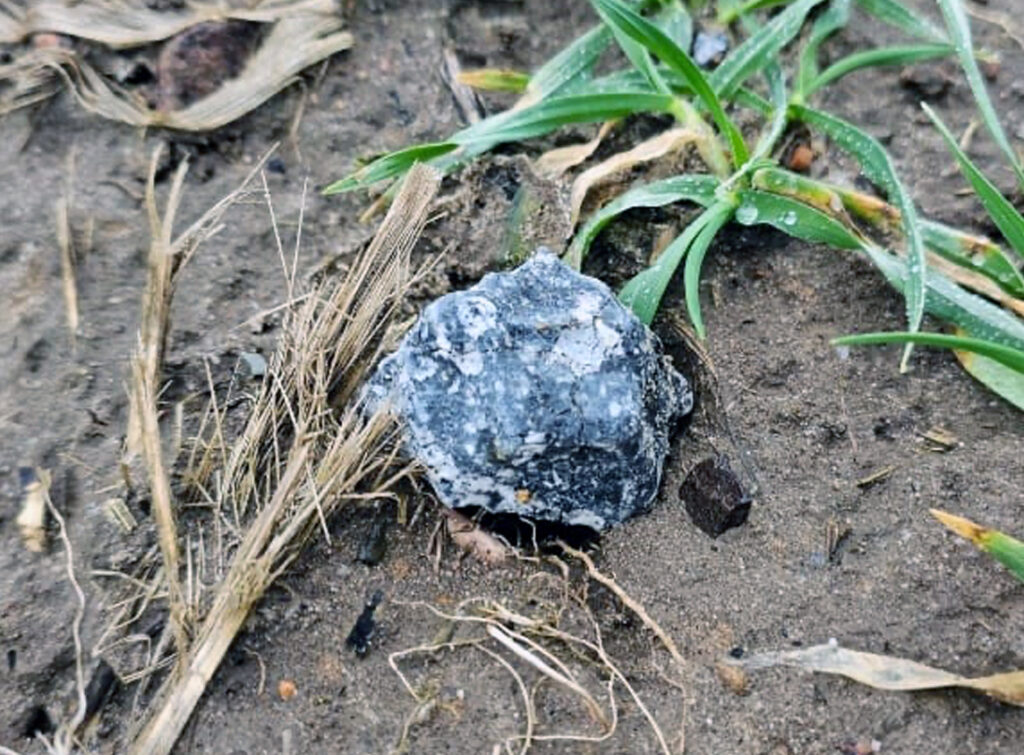
A 47.5-gram specimen in-situ, found by Richard ‘Di’ on 11 February 2024. Photo: Richard ‘Di’

One of the four meteorites found by Enrico Hoff and son on 11 or 12 February in situ. Photo: Enrico Hoff
Four partly fragmented specimens weighing between 1.5 and 4.5 grams in situ on 11 February 2024. Photos: Michael Hurtig
Four specimens found in February 2024 by David Göttlich. Photos: David Göttlich

A 5.45-gram specimen in situ in the afternoon of 3 February 2024, found by Daniel Steiniger. Photo: Daniel Steiniger

Sang-Hyeok Lee’s 11.7-gram mass in-situ on 3 February. Photo: A. Folta

A 2.69-gram specimen in situ on 15 February 2024, found by Mirko Graul. Photo: Mirko Graul

A 24.37-gram mass (25.74 gram wet) in situ near Ribbeck on 10 February 2024, found by Ralf Simmat and Charlotte Bedke. Photo: Ralf Simmat and Charlotte Bedke

Tomasz Aurora’s 3.19-gram find in-situ near the wind park south of Berge. Photo: Tomasz Aurora

A 7.79-gram specimen (~2 x ~2 cm) in situ on 15 February 2024, found by Thomas Naumann. Photo: Thomas Naumann

Jarosław Morys’s oriented 3.384-gram find in-situ on 15 February 2024. Photo: Jarosław Morys

Abdelkabir Oulgour’s 2.4-gram specimen (and fragments) at its find location at 14:58 CET on 21 February 2024. Photo: Abdelkabir Oulgour

Abdelkabir Oulgour’s oriented 2.38-gram specimen at its find location at 16:08 CET on 22 February 2024. Photo: Abdelkabir Oulgour
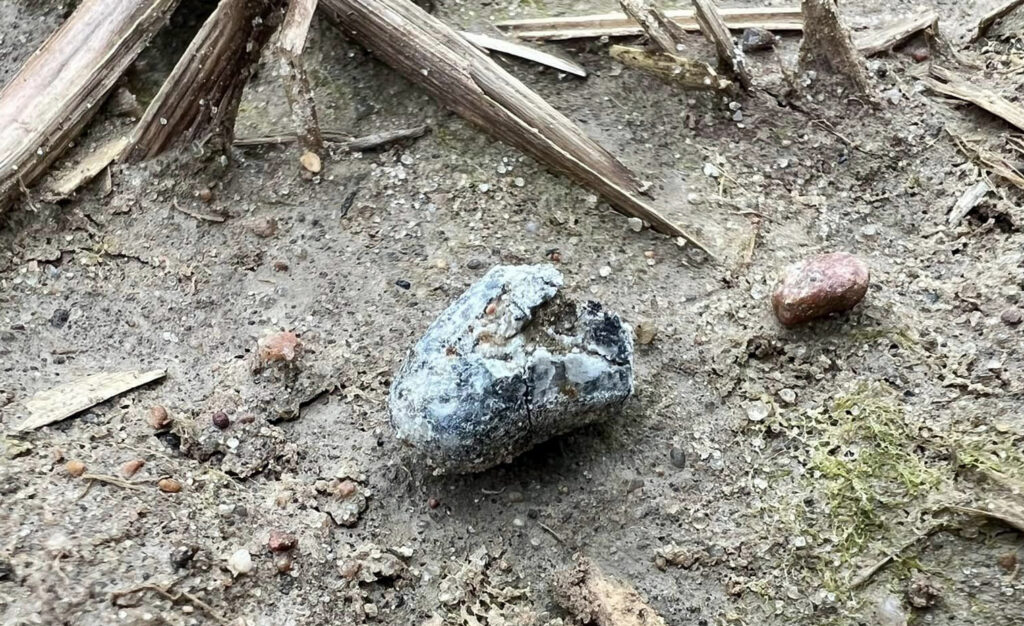
Mirco Graul’s 1.07-gram find in-situ on 27 February 2024. Photo: Mirko Graul
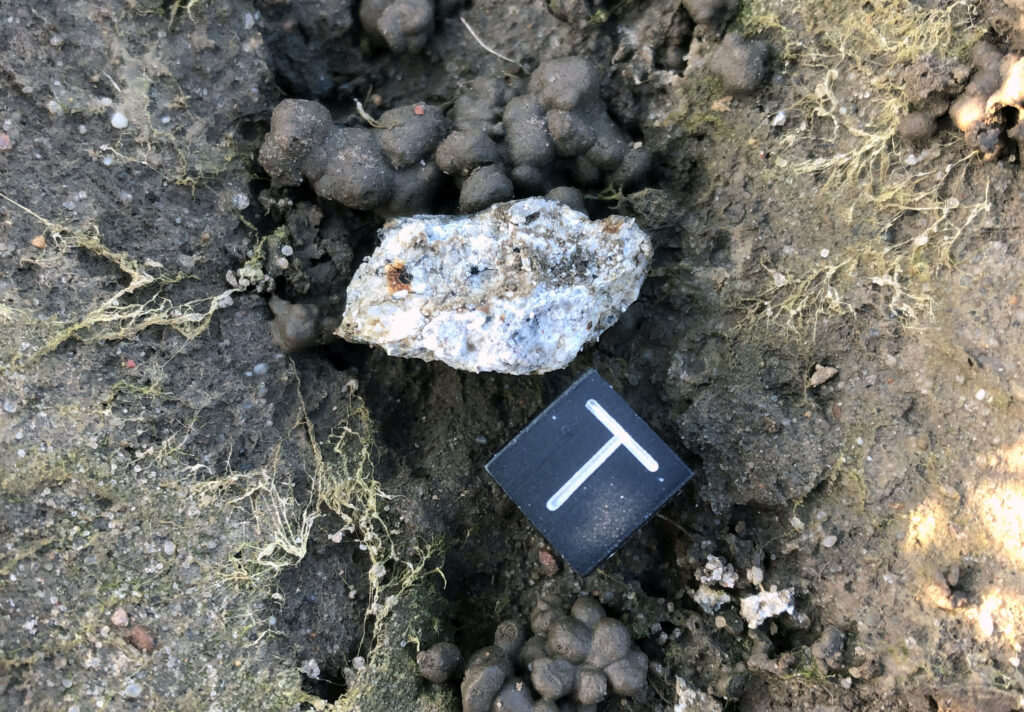
Ingo Herkstroeter’s 2.56-gram fragment repositioned at its find location at 16:18 CET on 5 March 2024. Photo: Ingo Herkstroeter

Ingo Herkstroeter’s 4.48-gram fragment at 15:36 CET on 6 March 2024. Photo: Ingo Herkstroeter

Andreas Möller’s (AKM) 7.36-gram find at its find location on 9 March 2024. Photo: Andreas Möller

A 1.49-gram specimen in-situ, found by Frank Rauschenbach on 11 March 2024. Photo: Frank Rauschenbach
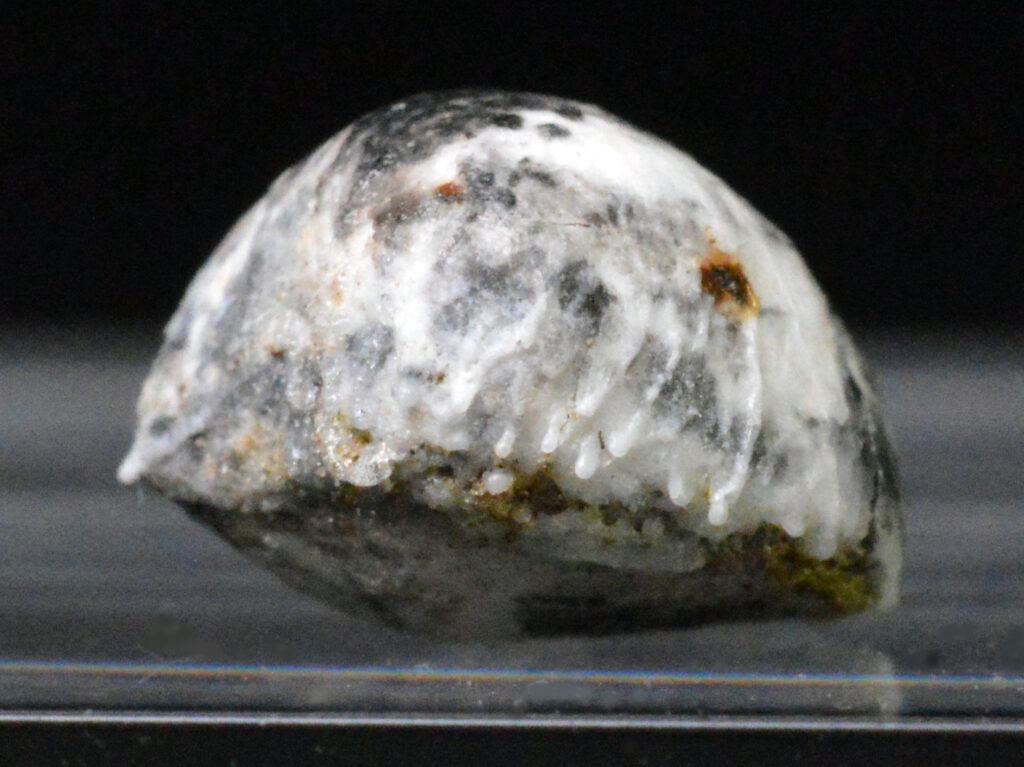
A beautifully oriented 0.872-gram specimen with flowlines and little melt drops of about one gram which was found by Stefan Ralew. Photo: Stefan Ralew
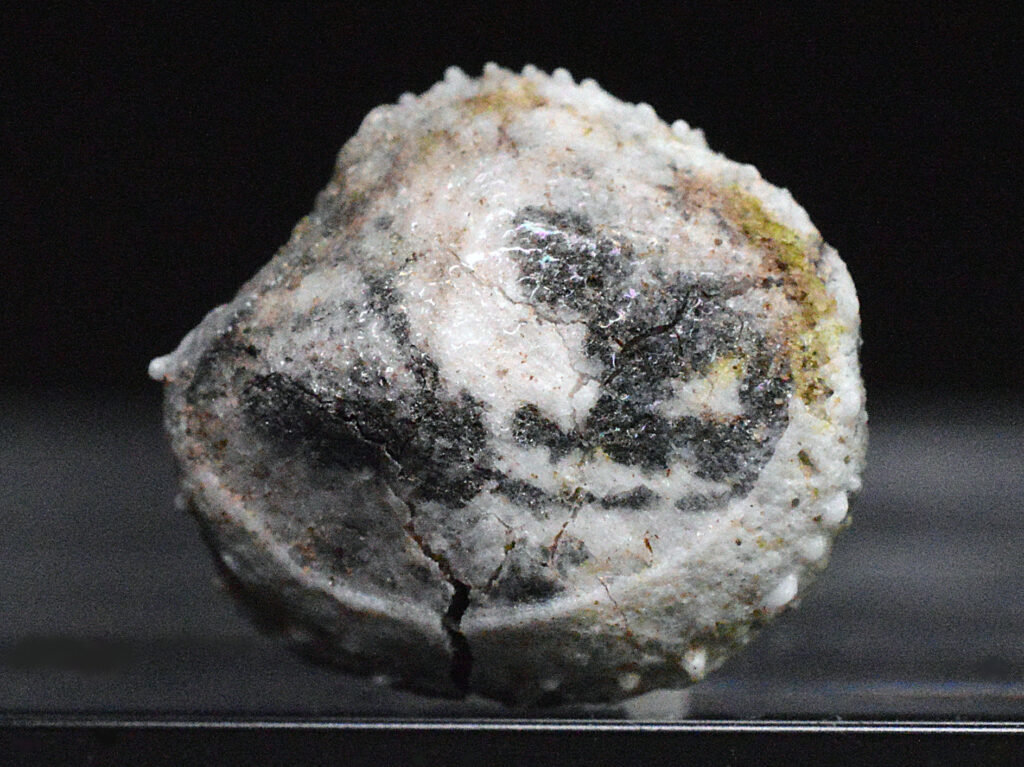
A beautifully oriented 0.872-gram specimen with a perfect roll-over lip of about one gram which was found by Stefan Ralew. Photo: Stefan Ralew

Stefan Ralew’s oriented 0.872-gram specimen in-situ on 20 March 2024. Photo: Stefan Ralew
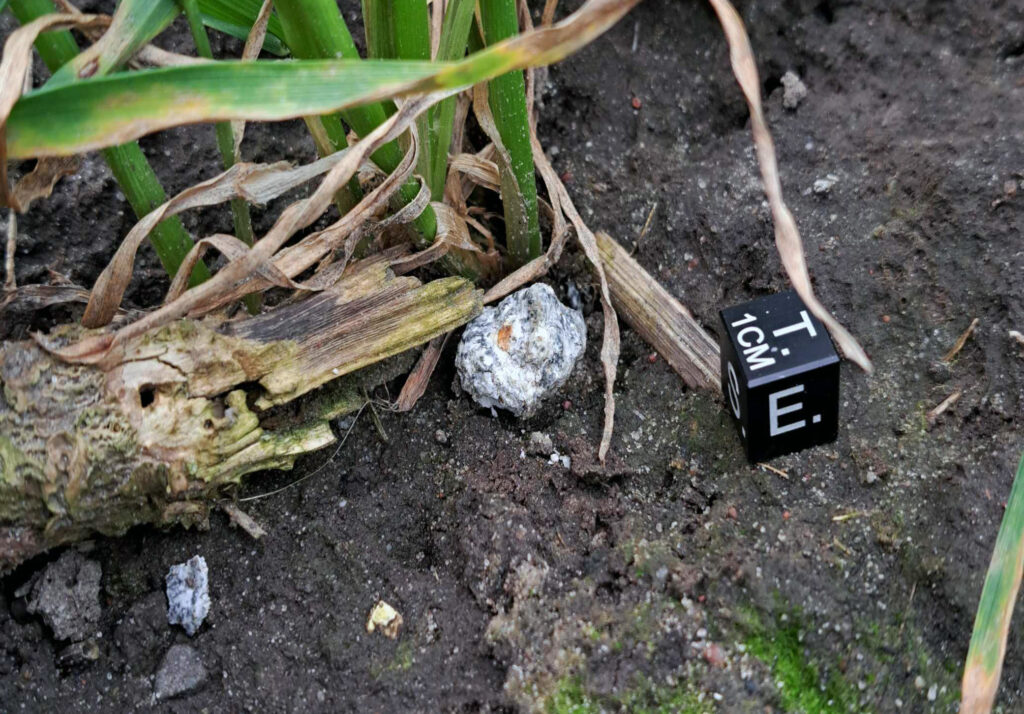
The 2.741-gram fragment next to a smaller 0.068-gram fragment of Thomas Bieber’s 3.335-gram find. Photo: Thomas Bieber
Media
On 25 September 2024 the Franco-German culture TV channel ARTE broadcast the 30-minute documentary film Re: Auf der Jagd nach Meteoriten / ARTE Regards: Chasseurs de météorites about private search activities and scientific studies around the Ribbeck meteorite fall.
A video about the analysis and classification of the Ribbeck meteorite fall as Aubrite. Video: Museum für Naturkunde Berlin (5 February 2024)
Interview with Prof. Dr. Lutz Hecht and Dr. Ansgar Greshake (Museum für Naturkunde Berlin)
RBB television, DER TAG in Berlin & Brandenburg (11 April 2024, 18:00 CEST)
3D model of a Ribbeck fragment, provided by Delft Meteorite Lab
Asteroid 2024 BX1
Asteroid 2024 BX1 was first discovered at 21:48 UT on 20 January 2024 by Krisztián Sárneczky at the GINOP-KHK Piszkéstető Mountain Station of Konkoly Observatory in Hungary. Shortly after midnight on 21 January it was calculated and announced that the meteoroid would hit earth near location N 52.6, E 12.5.
The discovery images of 2024BX1 by Krisztián Sárneczky, made with the 60-cm Schmidt Telescope at Piszkéstető Mountain Station, part of Konkoly Observatory, Hungary.
Video: A. Sonka
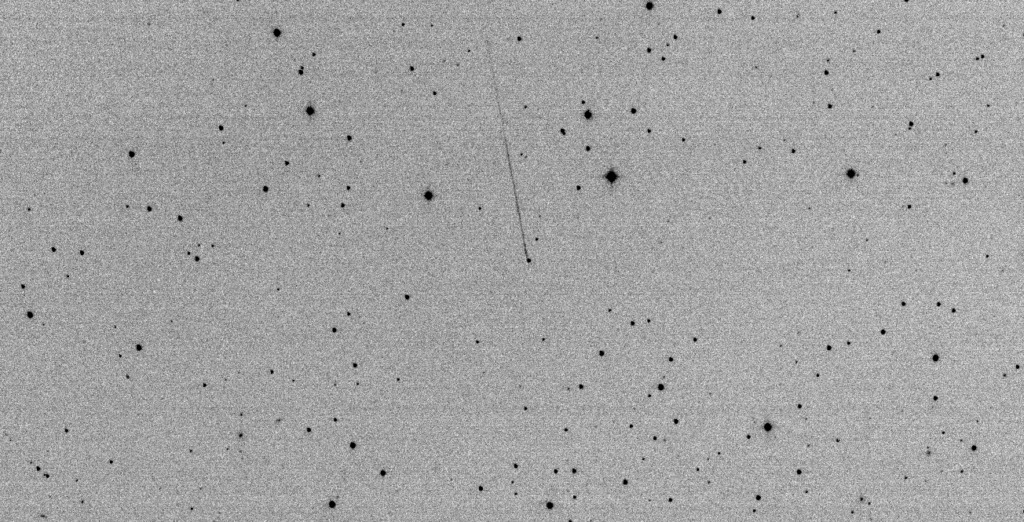
Last image of asteroid 2024 BX1 from Schiaparelli Observatory near Varese, Italy (MPC 204) by Luca Buzzi and Gianni Galli.
The bolide
The bolide recorded from Lichtenrade, Tempelhof-Schöneberg, Berlin. Video: Michael Aye (@allplanets)
The bolide, recorded with the AllSky7 camera AMS16 in Ketzür (Beetzseeheide). Video: Sirko Molau
The bolide, recorded with the FRIPON camera in Ketzür (Beetzseeheide) (52,495° / 12,631°). Video: Sirko Molau
The bolide recorded from the Europahaus at Augustusplatz in Leipzig. Video: Leipziger Stadtwerke
Video: GionGionni
Video: C.T. in Berlin area
Video: Leszek (@makdaam@chaos.social)
Video: FloBerlin
Video: Christian Heller from Herzfelde




